The ALMONDBURIAN
THE MAGAZINE OF THE OLD ALMONDBURIANS’ SOCIETY



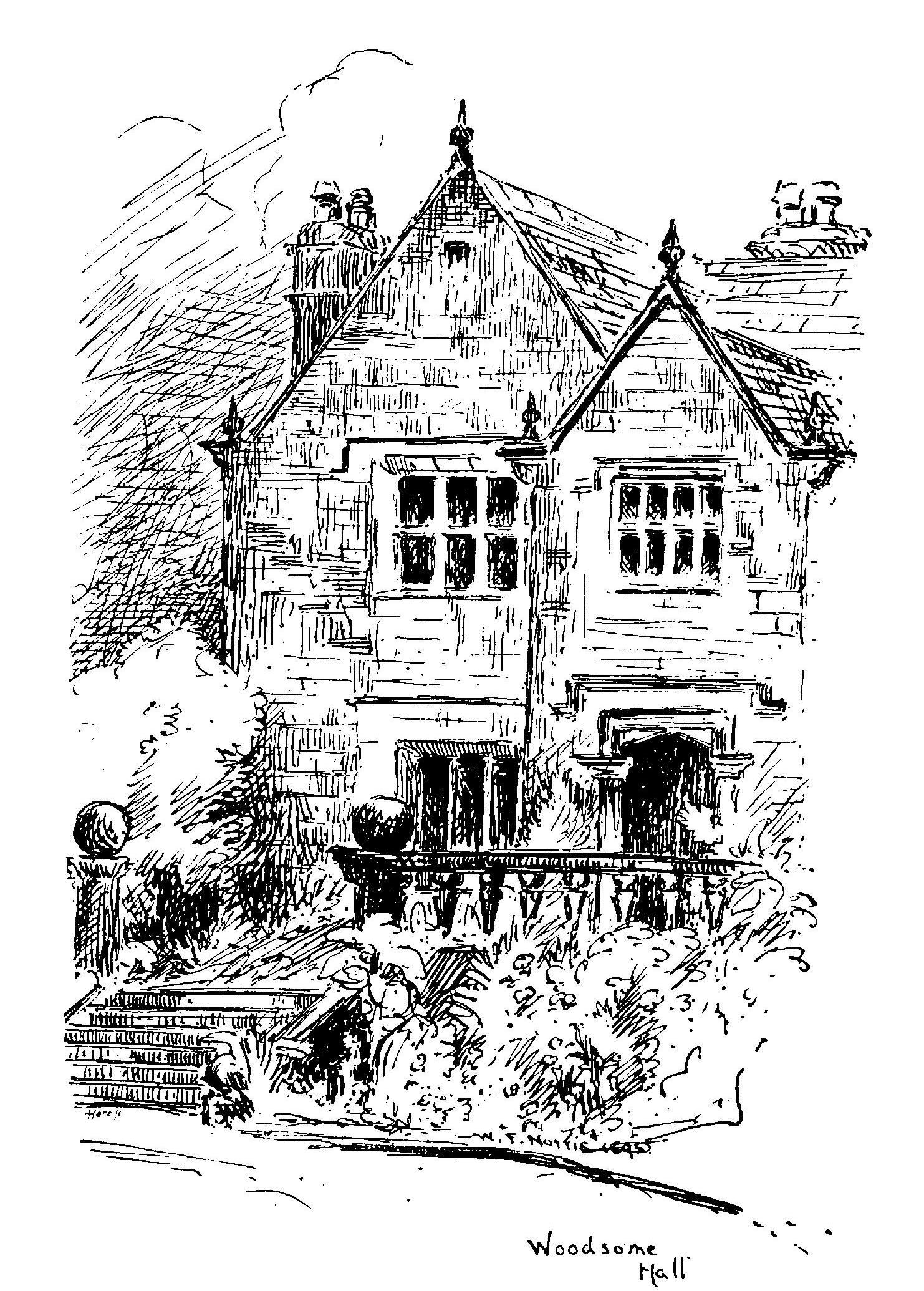
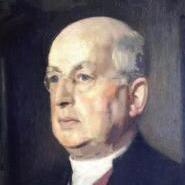
The magazine of The Old Almondburians’ Society
FIRST of all may I wish you a very belated Happy New Year. I believe 2024 is going to be an important, even pivotal year in the history of the Society.
The Annual Dinner went off very suc-

cessfully on 25th November (report: page 27) with the excellent guest speaker Karen Beattie. As usual, it was apparent that most of those who attended the Dinner were from the grammar school era, an observation I made in iny own pre-
sentaion. This led to a lively discussion afterwards, which encouraged us to seek further thoughts at the forthcoming AGM on ways of attracting more members - of both sexes – from the comprehensive school era.
We therefore encouraged as many of you as possible to join us in person or via Zoom for the AGM on 8th January (report: page 13). I was delighted with the response! Far more than usual joined us for the AGM and as you can see I was, once again, invited to continue as your Chairman. Whilst I take it as a great honour I feel it would be good for the Society if someone took over from me next year. I think it will be my eighth year as Chairman, far more than is usual. A change could bring new ideas and initiatives to the society which can only be good for the membership.
We need to find ways of attracting more members of both sexes from the comprehensive era
This year I would like to move forward in updating our database of former students. We have the data available, we just need some volunteers to put it on the system. Our Media Editor Roger Dowling organised a team of members to do it last time so I’m hoping we can do it again. This database is particularly important for answering queries from members and loved ones who are researching their family histories. In the last couple of months alone I’ve used our archive to search for answers to three requests. It really does need updating and maintaining.
I should particularly like to thank Mike Powner for joining us at the AGM. Mike was on holiday in Australia and rose at 4.30 am for the experience. It must be some sort of a record and worth a bucketful of Brownie points!
The reason we contacted more of you individually to join us was the contentious subject of a name change for the Society had been raised - not for the first timeat the Dinner. It was again discussed at the AGM at length, and at last month’s Executive Committee meeting. The outcome is the subject of a special article on page 22 of this issue.
I would also like to get all the School Honours Boards updated. I realise we can’t do this every year but I think it was last done in 2017. Those students whose names are not yet on the boards must be so disappointed if they return to School and see their names are still not up for public viewing.
As I wrote earlier this is an important year for the Society and we want to do what the Society members want us to do. Later this year we shall be sending out a questionnaire asking for your views on many aspects of the Society and the direction YOU want to go in.You can begin to get your views heard by joining us on Zoom for our monthly meetings. The next meeting is at 6.00 pm on Monday, 4th March and the dates for the rest of the coming year are shown on the panel opposite. We should be delighted if you could join us. n
SINCE the previous membership report in the autumn, we have been delighted to welcome two new members to the Society:
Charlotte Haigh (2018-23) and Eleanor Haigh (2018-23), both from Almondbury and both of whom have gone on to Greenhead College to study for ‘A’-levels.
Over the same period, we have been saddened to learn of the deaths on 14th January of John Anthony Hirst (1957-64), latterly resident in Ripon; and on 30th January of Harvey Smith (1948-56), latterly resident inYork.
Subscriptions for 2023-2024 fell due on

1st September and most of our 458 members now pay their subscription by standing order. Of the few members who do not pay by standing order, there are just fifteen who haven’t yet made their subscription payment for this year. Those members will receive a letter and subscription form with this issue of The Almondburian and we would ask you to send your payment without delay. It does make life much easier if you pay by standing order, so if you can complete the standing order mandate on the subscription form and return it in the envelope provided, that would be even better! Alternatively, you may renew online, using PayPal or a debit or credit card, by visiting www.oas.org.uk/membership.php n
BADMINTON/TENNIS
Details: page 65.
QUIZ NIGHT
Wednesday, 15th May 2024 (7.00 pm for 7.30 pm) at the Woolpack, Almondbury (Provisional date: please contact Keith Crawshaw. details on back cover)
OAS SUMMER REUNION
Leeds Symphony Orchestra concert at St Margaret’s Church, Ilkley
Saturday, 6th July 2024 (details: page 24)
GOLF (GOTHARD CUP) (contact Robin Merchant robin.merchant@oas.org.uk)
Sunday, 21sh July 2024 at Woodsome Hall (details: page 65)
FOUNDERS’ DAY SERVICE
Friday, 22nd November 2024
ANNUAL DINNER
Saturday, 23rd November 2024
Our monthly meetings are at 6.00 pm in the ODH at School, with a Zoom link for those unable to attend in person. Any member of the Society who would like to attend one of these meetings will be made most welcome on the following dates:
Monday, 4th March
Monday, 8th April
Monday, 13th May
Monday, 3rd June
Monday, 1st July
Monday, 2nd September
Monday, 7th October
Monday. 4th November
Monday, 2nd December
If you would like to join us for any of the above meetings and are unable to attend in person, then please e-mail the secretary Andrew Haigh at andrew.haigh@oas.org.uk to request login details, an agenda and any other documents.
The Ofsted inspection system is under the microscope following the tragic death of a school headteacher. Whatever the result of the next General Election, changes are vital.
IT has become customary, at this time of the year, for me to deliver a ‘state of the nation address’. In writing that statement, I was minded to conduct a little research and discovered that George Washington delivered the first such address (from which the term has been coined) to a joint session of US Congress on 8th January, 1790 … some 182 years after the foundation of King James’s School, but 130 years before the foundation of the OAS. I think it fair to say that we are very much following in their footsteps therefore.
So, what can we expect for the nation’s education this year? Clearly, it won’t have evaded peoples’ consciousness that we may be facing an election this year, so a quick look at the respective plans of Conservative and Labour parties as announced at their October conferences may seem a reasonable starting point (see panel opposite).
Labour did also mention one other idea: to reform the Ofsted inspection system. This is arguably the most important statement that any party has made in recent years. Proposals include replacing the traditional one-word graded judgments in favour of a broader report-card view of how a

school is doing in the “shortest time possible”. This may be achieved much more rapidly than one might ordinarily imagine as January heralded a new Chief Inspector of Schools, Sir Martyn Oliver. From 2016 to 2023 he was the Chief Executive Officer of Outwood Grange Academies Trust, which currently has 31 academies – 21 secondaries and 10 primaries – in the Tees Valley, Yorkshire, North Lincolnshire, Nottinghamshire and Derbyshire regions. He was knighted in the 2022 Birthday Honours for services to Education.
Reforming the Ofsted inspection system is arguably the most important issue
One of Sir Martyn’s first actions was to pause inspections while emergency remedial training is delivered to school inspectors following last month’s verdict at the inquest into the death of headteacher Ruth Perry. The ruling that Ofsted contributed to the headteacher’s suicide a year ago, after her primary school was downgraded to ‘Inadequate’, is a landmark one. Sadly, however, it merely confirmed, what has been known for years by those with first-hand experience; that the pressure placed on schools by Ofsted is unimaginable and unnecessary. It should also be noted at this point that
Sir Martyn’s predecessor, Amanda Spielman, was widely condemned for her initial response to the inquest’s findings. A proposal of “an online briefing on teacher welfare” was as insulting as it was grossly inadequate. That she thought it an appropriate reaction to the coroner’s “prevention of future deaths notice” is frankly shocking.
Albeit the very early days of this new regime, there have already been a few
welcome signs of a different attitude to, and acknowledgment of, the strain that schools are now under. Support for schools rather than condemnation is welcome, as they confront fresh (postCovid) challenges, including a rise in absenteeism and deteriorating pupil behaviour, repeatedly missed teacher recruitment targets and serious problems around special needs provision.
Whilst some commentators have

New guidance for all schools to ‘ban’ mobile phones. [In reality, this isn’t actually a ban as the guidance will be nonstatutory (it lies outside the Secretary of State’s actual powers!) In any case, most schools already have robust policies on mobile phones and thus this is nowhere near the top of any school’s list of current priorities].
l A new baccalaureate-style qualification: the Advanced British Standard (ABS) for 16 to 19-year-olds, bringing A levels and T levels into a single qualification with students taking at least five subjects. [As such, it won’t directly affect King James’s, though we would be advising students about it. In reality, this is more a (10-year hence) vision for the future than a short-term prospect].
l Upskill primary school teachers to teach ‘real world’ maths, applying numeracy to things like household budgets and sports league tables.
l Early years review looking at widening childcare eligibility, boosting primary school-based nursery provision and major reform of the early years’ workforce. [Effective intervention in the early years is key to closing the disadvantage gap, so this looks encouraging].
l Recruit 6,500 more teachers. [As mentioned this time last year, we are facing a serious recruitment crisis, so any meaningful effort to resolve that would be most welcome. Action on pay, workload and attitudes towards the profession are key to this debate].
l A policy promise to reset the relationship between government and the profession, doing things on the basis of partnership and mutual respect. [This would also be very welcome, as for far too long policies have been landed on the profession often via stories placed in the media].
l An end to the tax breaks that private schools enjoy. [Though this could have implications if there is insufficiency of places within the state system to meet increased demand].

Chief Inspector of Schools: Sir Martyn Oliver. He was appointed in January 2024 for a fiveyear term.
made unsubstantiated claims that the move away from single-word judgements would be unpopular, recent research has found that parents would in fact support this change. And a move to a more supportive and less adversarial model of school inspection in general would be welcomed by all those involved in schools. Commentators have also wielded the argument that accountability is important, as though by criticising the current Ofsted processes schools are somehow arguing for the removal of accountability. Nothing could be further from the truth; I would struggle to find anyone connected with schools that would disagree with the principle of accountability. However, the current model that has dominated public services since the 1990s, with its heavy emphasis on business-style targets, is increasingly recognised itself as inadequate. Among its

many flaws is the over-emphasis on reward and punishment, of which there are few clearer examples than the power of Ofsted to make or break schools and their leaders. By contrast, the intrinsic motivation that leads people to work hard because they believe in what they do has been systematically neglected. And we all know how much schools depend on good will.
Though they reserve the right to come at any time, King James’s School would typically expect its next visit from Ofsted by November 2024, possibly after the next General Election. Only time will tell if what has been promised is actually realised.
Floreat schola! n
We are always delighted to receive articles, letters or photographs for publication in The Almondburian. Photographs should ideally be at 300dpi resolution at the size at which they will appear in the magazine, and in .jpg or .png format. Please submit photographs as separate attachments, not embedded in Word documents. Editorial email address: almondburian@oas.org.uk
The importance of apprenticeship schemes is now widely recognised in the UK. Assistant principal ABBI TERRY reports on a recent KJS ‘Business Breakfast’ event.
IN Januarywe held our annual Business Breakfast which is an event for students who are considering an apprenticeship when they leave King James’s School. We were lucky enough to be able to welcome over 20 employers and apprenticeship providers to King James’s School.
Nearly 80 Year 11 students took part and spoke to a wide range of employers (see panel).
At our Business Breakfast, we had a guest speaker who is completing a degree apprenticeship. Ellie Sansom, who is a Trainee Civil Engineer for Bam Nuttall, started her degree apprenticeship in September 2022 working on the TransPennine Route Upgrade. She is a huge advocate for apprenticeships and spoke to our students about her role and how she got into it.
This is very different to when I was at school in the
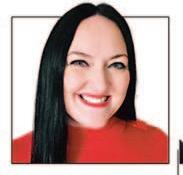
80’s and 90’s… Then, those who were training to be an apprentice were those going into ‘A Trade’ – that is into building, plumbing or electrical work. Most of my peers, especially the boys, chose this route and it was something that was encouraged to set them up for life. At my school, we were working class and so it seemed pointless trying to continue with our education, as we needed to get out there and get a job as soon as possible! The majority of those ‘boys’ still work in their chosen areas and have made a comfortable living.
Aire Vocational Training
Appris Management
Ask British Army
Cummins
Kirklees College
Kirklees Council
NHS
Police
Real Employment
Reliance Precision
Morgan Siddall
Royal Air Force
Royal Navy Syngenta
The Link
TransPennine Route Upgrade
Trust Ford
Westin
YPO
Apprenticeships today are VERY different and many of our students explore this as an option, for example, there are different levels of apprenticeships. There are:
Intermediate apprenticeships provide basic knowledge and skills for specific jobs and are equal to GCSEs.
Advanced apprenticeships




which offer more specialised knowledge and skills and are equal to A levels.
Higher apprenticeships which focus on higher-level professional skills and can be equal to a foundation degree, a Higher National Certificate (HNC), or a Higher National Diploma (HND).
Degree apprenticeships lead to either a full bachelor's or master's degree. Those who choose to follow this route have their degree paid for by the company they work for, while they learn.
As well as the different levels of apprenticeships, there are now over 700
different jobs and roles. At school, we are going to be looking at the different apprenticeships that different subjects can support for example, students who study drama who wish to do an apprenticeship could potentially train as a post-production engineer, animator or costume technician while students who wish to do a Maths based apprenticeship could train to be a civil engineer, chartered surveyor or financial advisor.
This means that there is something for everyone who wants to take the apprenticeship route. n
AS ever, ‘times tables’ are the foundation of mathematics. It used to be a process of ‘learning by rote’ but KJS prefers to do it in a fun way, using an application called Times Tables Rock Stars (TTRS). This allows students to compete in battles and play times tables games on their phones, computers and also paper-based.

King James’s School took part in the nationwide England Rocks competition, where the whole School was challenged to compete against schools locally and nationally to see who were the times tables champions. KJS came sixth of the secondary schools within an 80-mile radius,
.
Last December, the year 10 BTEC group headed into Manchester for a day full of theatre visits. They started at the Royal Exchange Theatre, where the group explored the pros and cons of theatre in the round. After lunch and a visit to the Christmas Markets it was time for a visit to Manchester Opera House where the group experienced thetraditions of a pantomime and enjoyed a lively performance of Jack and the Beanstalk starring Jason Manford.

BLACK HISTORY MONTH is an annual observance originating in the USA to remember important people and events in the history of African peoples around the world.
This year, KJS took inspiration from John Agard’s poem Checkin’ Out Me History, in which he recalls being taught about famous white Europeans but being taught nothing about important black historical figures.


Agroup of 26 KS4 students attended a virtual presentation from the American company Boeing. The company’s STEM (science, technology, engineering and mathematics) Ambassador told the students about entry requirements onto the Boeing Apprenticeship and the career progression that was possible. They learned about the packages offered by Boeing which included paid-for opportunities to study for degrees, with paid-for accommodation in their frst year of study. Apprentices could choose to work in geographical regions such as Scotland, Germany, Norway and Australia. Work options included passenger aviation, military projects or the aerospace field.
There are plans for further STEM-related presentations in the months ahead.
TWELVE Year 7 students paid a visit to the new Hirst science building at Greenhead College where the students there planned and delivered some exciting science taster sessions including investigations into oil density, the modelling of digestion systems and the manufacture of DNA from sweets
.A highlight of the visit was an encounter with Jane, the biology department’s pet boa
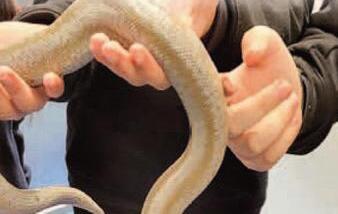
fortunately proved to be very friendly.
In short…
l The Careers team at King James’s School invited many different organisations, students, parents and carers to an Aspirations Fair event.
l Year 11 took part in mock interviews, with visitors from a range of organisations.
l Following the launch of the new KJS Rewards scheme, the Rewards Committee of senior students and staff have created a plan for recognising excellence in the Shool community. n
The Annual General Meeting of the Society was held in the ODH at School and also online by Zoom on Monday, 8th January 2024, at 6.00 pm.
Attendance
Walter Raleigh was in the chair and Richard Taylor, Andrew Haigh, Keith Crawshaw, Ian Rimmer, Graeme Carby and Richard Teale were in attendance, with Robin Merchant, Roger Dowling, Graeme Milnes, Peter Warry, John Sharp and Mike Powner joining online. Mike Powner deserves a special mention for getting up at 4:30 am to join the meeting from Australia.
Apologies for Absence were received from Christopher Mann, Dawn Smart, Chris. Firth and Nichola Mott.
Minutes of the Annual General Meeting held on Monday, 9th January 2023
The Minutes were read and approved and there were no matters arising.
Walter Raleigh noted that 2023 saw the completion of a major project, the Big Tree Yard seating area. Nothing like this was planned for 2024, a year of consolidation which would suit our Treasurer! Progress was, however, made with our aim to update the list of former students. Discussions with the Data Protection Agency have resolved the concerns around the Society obtaining the names of recent leavers.
The West Yorkshire Archive Service is progressing well with cataloguing our archive material and they hope to complete it this year. The next step will be to digitise the material.
The usual activities took place. Once again, Keith Crawshaw organised a wonderful Quiz Evening at The Woolpack.
September saw the Society again team up with the School to open it up for the Heritage Open Days programme. Our thanks go to the students who were, as usual, brilliant at showing visitors around the School, as well as to Ian Rimmer and Abbi Terry who made it all possible.
In November, the Friday afternoon Founders’ Day Service was a major disappointment this year, since the School suffered a power cut during the morning which meant that, after all the hard work by the Society Chaplain, Rev. Graeme Carby, to prepare the service, it had to go ahead in a shortened form without the participation of current students.
The Annual Dinner the following evening went rather more smoothly and with the help of our principal speaker, Karen Beattie, and the hard work of our Secretary, Andrew Haigh, we again enjoyed a very pleasant evening. Thanks are due to the school Premises Manager, Tony Hyland, for his help and also to the kitchen team, led by Linda Hyland, who produced a marvellous meal. As usual, the Head Boy and Head Girl did the School proud and their deputies raised a significant sum from the raffle.
Whilst the dinner is a lovely occasion, it is important to realise that numbers are tending to decline and also that the Quiz Evening only draws in a dozen or so regulars, which is disappointing after all Keith’s hard work in preparing questions. Conversations at the dinner addressed the thorny question of how we can encourage more former students from the comprehensive era to join the Society and, more importantly, to participate. The question of changing the Society’s name was, once again, raised, since some felt it is off-putting for younger people. A suggestion has again been made to drop the ‘Old’ and just be the ‘Almondburians’ Society’ and a more radical suggestion was to change it completely to the ‘King James’s Society.’
It would also be nice to have more involvement from current staff. Perhaps the Quiz Evening could be held in School with Staff and Senior Student teams? Perhaps also teams from the Governors and the Foundation. Staff could represent their department or Senior Students their House. There are retired members of staff who meet up regularly for lunch, but not at the Annual Dinner. Why not?
At our monthly meetings, we have a regular, hard-working team of about half a dozen, but we need more members with fresh ideas. How do we encourage them to join us? The status quo cannot continue, or the Society will wither on the vine.
In conclusion, thanks are due once again to those who week after week work so hard for the Society: Andrew Haigh, our Secretary; Keith Crawshaw, our Treasurer; Roger Dowling who, along with Richard Teale, produces a magazine second to none; Rev. Graeme Carby, our Chaplain, who has brought the Founders’ Day Service into the twenty-first century and to all those who join our meetings regularly, such as Dawn Smart and Graeme Milnes, who give their thoughts and encouragement. Finally, thanks to Chris. West, who is stepping down from the Executive Committee, for his support over the last few years.
Keith Crawshaw presented the accounts for the financial year ended 31st August, 2023, noting that subscription income has increased by £29 and that we now have some income from bank interest once again! There were no sales of ties during the year, which is most unusual, but we did sell two scarves and two copies of No Beating About the Bush.
Keith observed that the cost of producing and distributing the magazine has remained about the same and the proportion of subscriptions used to produce and
distribute the magazine is also stable at 76%, so we can be happy with that.
The other main items of expenditure have been the new trophy cabinet, the Big Tree Project and the round tables for the Annual Dinner, which have also been used by the School. This has resulted in an excess of expenditure over income of £320.75. So, it has been a pretty good year in which we have fulfilled everything. The total cost of the Big Tree project was £8,500 and fundraising went very well for that. We do still have some money left, despite the best efforts of our Chairman! The assets currently held by the Society total £11,539.72.
Graeme Milnes proposed acceptance of the accounts, which were approved.
Membership Secretary’s Report
Andrew Haigh reported that, during the last financial year, we had recruited seven new members but, unfortunately, six members had passed away. Membership currently stands at 459, of whom 16 are currently in arrears.
Subscription Rate for the Financial Year Commencing 1st September, 2024
Keith Crawshaw felt that, on the basis of the accounts that he had just presented, it was still possible to keep the subscription rate at £10. He noted that it is amazing value to receive three magazines per year for just £10, but he proposes that we continue, since it is such a big job to get all the standing orders changed.
Robin Merchant suggested that everyone leaving the School at age 16 should be made a member of the Society for ten years. We wouldn’t send them a magazine, so it wouldn’t cost anything, but they would receive e-mails and they could read the magazine online if they wish. This may make them more likely to join the Society as they get older and a larger Society may lead to other things. John Sharp thought that this was an excellent idea. The Principal observed that we would need to obtain a personal e-mail address from leavers, since they all have school e-mail addresses whilst students and these no longer work once they leave. Roger Dowling thought that we might give them a hard copy of the magazine on leaving.
Roger Dowling went on to comment that not increasing the subscription rate pre-supposes that we are not going to do more for our members which might cost money, perhaps meetings with a speaker, for example. He noted that every organisation of which he is a member had regular events for its members.
Andrew Haigh observed that if you were increasing the subscription rate, you would increase it to £20. Peter Warry agreed but noted, from experience, that we would get some fall off as people were reminded that they had a standing order and cancelled it! Roger Dowling said that he hadn’t meant that we should do it now, but that we may want to do so in the future.
It was agreed that we keep the current subscription rate of £10.00 per annum, or £20.00 per annum for overseas members who wish to receive a hard copy of the magazine by post.
The Chairman proposed that the Principal should be invited to continue as President of the Society for 2024. This was agreed and Ian Rimmer was duly re-elected.
Ian Rimmer thanked the meeting and commented that, in view of everything that has been going on, such as the split site, the integration of Almondbury Community School, recruitment difficulties, absences due to Covid then, as for the Society, 202324 is a year of consolidation and reflection for the school. On top of all that, senior staff are getting older and are looking to leave a stable ship behind.
In terms of the Society, what do the members want from it? We are the facebook generation, but today’s young people communicate by Snapchat or Instagram. The Society’s events are quite traditional: Annual Dinner, Founders’ Day Service and Quiz Evening; there are only those and a few sporting offerings. If there was a plan of offerings that we could weave into the School calendar, then the Society’s name would become ever-present in School, as it used to be.
Robin Merchant thought that it would be good if former pupils who are business people came back into School and explained to current pupils about life outside School, including the Society, saying: ‘I left School at sixteen, just as you are about to.’ The President thought that would be quite inspiring.
Peter Warry had to leave the meeting at this point to attend another meeting.
Walter Raleigh agreed to continue as Chairman for 2024. The other Officers were then elected as follows:
Vice-Chairman
Honorary Secretary
Honorary Treasurer
Media Editor
Assistant Media Editor
Ordinary Committee Members
Chaplain
Representative of the School
Badminton Section Representative
Golf Section Representative
Tennis Section Representative
Vacant
Andrew Haigh
Keith Crawshaw
Roger Dowling
Richard Teale
Martyn Hicks
Graeme Milnes
Michael Powner
Dawn Smart
Two Vacancies
Rev. Graeme Carby
Abbi Terry
Andrew Haigh
Robin Merchant
Andrew Haigh
The Chairman reported that the subject of the name of the Society had been raised again at the Annual Dinner, with some people feeling the ‘Old Almondburians’ Society’ gives the perception that it is an old boys’ club. One suggestion was to drop the ‘Old’ and become ‘The Almondburians’ Society’ whilst another was to change it completely to ‘The King James’s Society.’ We asked the membership about dropping the ‘Old’ a few years ago and the majority wanted to retain the current name.
Robin Merchant said that his view is that changing the name is like moving the deckchairs on the Titanic. Will it make a difference? He didn’t think so. Robin felt that it would take up a lot of time to do and wondered if the time wouldn’t be better spent becoming more involved with the School. The Secretary reported that two other members had already expressed a similar view to him. Roger Dowling didn’t agree, saying that it is a very simple thing to do. Richard Taylor recalled that they dropped the ‘Old’ from the name of the cricket club but wasn’t sure it was the time to do the same with the Society. John Sharp felt that taking the ‘Old’ away is a step in the right direction, but more would be required. He recalled that when he left school, he wasn’t the slightest bit interested in joining the Society; it’s only in later life that it dawns on you what a fantastic start you had. Keith Crawshaw felt that it would need a bit of thought, since it may have implications for the bank account. In addition, a lot of things incorporate ‘OAS’, such as the web site and email addresses. So there are other things that we should carefully consider before going ahead with any change.
Any Other Business Executive Committee Meeting – The Secretary asked that the date and venue be fixed for the next meeting of the Executive Committee. The first Monday in February is the norm and Monday, 5th February in the ODH at School and via Zoom was agreed.
The Meeting Closed at 7:55 p.m.
Signed: A.M. Haigh, P.W. Raleigh, Secretary. Chairman.Overleaf: Annual accounts presented by P W Raleigh (Chair)
K Crawshaw (Treasurer)
J A Swift (Independent Examiner)
President Ian Rimmer King James’s School Work Telephone: (01484) 412990 e-mail: staff.irimmer@kingjames.school
Chairman Walter Raleigh
15 Thorpe Lane Home Telephone: (01484) 308452
Almondbury e-mail: walter.raleigh@oas.org.uk
Huddersfield
Yorkshire
HD5 8TA
Vice-Chairman (Vacant)
Hon Secretary Andrew M. Haigh
2 Arkenley Lane Home Telephone: (01484) 432105
Almondbury Mobile Telephone: 07770 220733
Huddersfield Work Telephone: (01484) 400032
Yorkshire Facsimile:(01484) 469567
HD4 6SQ e-mail: andrew.haigh@oas.org.uk
Hon Treasurer Keith Crawshaw
5 Benomley Drive Home Telephone: (01484) 533658
Almondbury e-mail: keith.crawshaw@oas.org.uk
Huddersfield
Yorkshire
HD5 8LX
Media Editor Roger Dowling
Orchard House Home Telephone: (01925) 756390
Oughtrington Lane Mobile Telephone: 07815 601447
Lymm e-mail: roger.dowling@oas.org.uk
Cheshire
WA13 0RD
Assistant Richard Teale
The Sycamores Mobile Telephone: 07810 313315
Media Editor 239 Huddersfield Road e-mail: richard.teale@oas.org.uk
Thongsbridge
Holmfirth
Yorkshire
HD9 3TF
Ordinary Martyn Hicks
Committee
Members
12 Gernhill Avenue Home Telephone: (01484) 539409
Fixby e-mail: martyn.hicks@oas.org.uk
Huddersfield
Yorkshire
HD2 2HR
Graeme Milnes 5 Heol-Y-Felin Home Telephone: 02920 627553
Rhiwbina e-mail: graeme.milnes@oas.org.uk
Cardiff
Glamorgan
CF14 6NB
Michael Powner 45 The Fairway Home Telephone: (01484) 423365
Fixby e-mail: mike.powner@oas.org.uk
Huddersfield
HD2 2HU
Dawn Smart 8 High Seat Hill Mobile Telephone: 07824 881132
Lazonby dawn.smart@oas.org.uk
Penrith
CA10 1AW
(Two vacancies)
Chaplain Graeme Carby 10 Rectory Drive Home Telephone: (01484) 302252
Kirkheaton e-mail: graeme.carby@oas.org.uk
Huddersfield
Yorkshire
HD5 0JT
Represent- Abbi Terry King James’s School Work Telephone: (01484) 412990 ative of the e-mail: staff.aterry@kingjames.school School
Head Boy Harry Walker King James’s School
Head Girl Demi Hutchison King James’s School
Badminton Andrew M Haigh 2 Arkenley Lane Home Telephone: (01484) 432105
Section Almondbury Mobile Telephone: 07770 220733
Huddersfield Work Telephone: (01484) 400032
Yorkshire Facsimile: (01484) 469567
HD4 6SQ e-mail: andrew.haigh@oas.org.uk
Golf Section
Robin E Merchant
26 Jagger Hill
Mobile Telephone: 07933 200475
Kirkheaton e-mail: robin.merchant@oas.org.uk
Huddersfield
Yorkshire
HD5 0RA
Tennis Section
Andrew M. Haigh
2 Arkenley Lane
Almondbury
Home Telephone: (01484) 432105
Mobile Telephone: 07770 220733
Huddersfield Work Telephone: (01484) 400032
Yorkshire Facsimile: (01484) 469567
HD4 6SQ e-mail: andrew.haigh@oas.org.uk
Independent Alan Swift Examiner
Vice-Presidents
Ken G. Shaw J. Andrew Ward Richard J. Green
Keith Crawshaw Paul Balderstone J. Richard Taylor
John M. Drewery Jack A. Taylor J. Amanda Taylor
Malcolm J. Taylor James N. Taylor David Gary Croft
David A. Bush Graham Cliffe Robert Williams
Bryan Hopkinson Emily Murphy Nicky Murphy
Nicky Briggs
Patrick O’Brien
Andrew Haigh Roger Dowling
Robert Lamb
OUR Society was founded in its present form in 1921. The following year theSchool was handed over to Huddersfield Corporation and from then until 1974 it continued to develop and flourish as a Boys’ Grammar School. Fifty years later it became a co-educational Sixth Form College, and two years later a successful Comprehensive School. It has remained as such, apart from losing its 6th form, for the past 48 years.
For the 52 years as a local Grammar School the OAS flourished with a membership up to over 700. It remained a unique organisation which kept former pupils and staff in contact by providing social events such as Chicken and Chips Evenings and the Annual Dinner and Founders’ Day Service, as well as providing opportunities to play together in local league football and cricket. It was a time before mobile phones; most former pupils would probably, in the 1940s and 1950s, not even have a landline telephone for communicating with each other. Of course, it was also a time before emails, Facebook and similar ‘social media’ that we take for granted these days. It was a different era but the former boys of the School bought into the Society and made sure it flourished.
In the Comprehensive era, the link between the School and former students has, for a few, remained; but for most our Society has become an irrelevance. Also,
present staff do not buy into the Society or its history.They don’t have a Jack Taylor or Dave Bush as I had when I joined the School in 1978.
The Society currently has a membership of around 450 – but the numbers are falling a little when I would like to see them rising. Does it matter? Hopefully, for a long time to come it will continue to offer a wonderful magazine three times a year together with the opportunity to meet in School each year in November. But if numbers dwindle there will eventually come a sad day when these activities will have to cease.
I should like to see the Society flourish and expand again.This is no pipe-dream: the School, with over 1,000 pupils today, is three times the size it was back in the grammar school days. The key is to make the Society as attractive to the former KJS students of today as it has always traditionally been to the former grammar school students of yesteryear
I believe the Society has to change – and we have to be seen to be changing. I made the point when I spoke at the Dinner that those who attend are predominantly males from the grammar school era.The numbers attending have also been somewhat down in the past couple of years, despite having excellent speakers. It’s a trend I’d like to see reversed.
A first step – and it can be no more than that – would be for us to look again at the idea of slightly changing our name in order
to make the Society more clearly inclusive. Rightly or wrongly,we live in an age when ageism has become something of a social prejuduce. Even at the last Dinner, the view was expressed that being called the ‘Old’ Almondburians was putting off potential members who saw the Society as some sort of ‘gentlemen’s club’. Why not simply become ‘The Almondburians’ Society’?
It’s not a new idea (see panel) but I support it strongly and commend it to you all. If we decided to go ahead, the basis is that we would use ‘The Almondburians’ Society’ as a ‘public’ name (for example in organsing future events, recruiting new members and on our website) while retaining the old name for financial and administrative purposes. Your committee discussed the proposition at its February meeting where it was agreed that we should defer a final decision until we had canvassed the views of OAS members. So now is your opportunity - please let us have your views!
This alone is not, of course, a panacea for
rejuvenating the Society but it could be a significant starting point. I believe we also need to look at our relationship and partnership with our old School. We need to ask ourselves what we want out of this precious relationship AND we need to ask School what they want. We need to work harder to cement the relationship between School and Society.
As a Society we have much to offer and I don’t simply mean by dipping into our pockets to support certain ventures, though this is important. KJS Principal Ian Rimmer has suggested using the expertise of members to talk to older students about particular areas of employment. What does being a teacher, firefighter, pharmacist, motor mechanic, solicitor or police officer actually entail? We have members who could talk to them and let them know. Students could answer questions they might not feel confident to ask on a one to one basis. It could be a big win for both the School and the Society. School would gain expert help and students would see So-

If you consult the index of Gerald Hinchliffe’s excellent History of King James’s Grammar School you will look in vain for any reference to the’Old Almondburians’ Society’. When it was set up, it was in fact the ‘Old Boys’ Society’ - and this was the name by which it was known until at least the 1950s. But times change, and so must names. The suggestion to change the name of the OAS has been raised on a number of occasions in recent years. Most recently, in the July 2016 issue The Almondburian, former OAS chair Graham Cliffe proposed such a change, pointing out that ‘the imageconscious times in which we live, style and presentation are important elements in the success of any organisation.’ We would welcome your views on whether ‘The Almondburians’ Society’ would be a more welcoming and inclusive operational name for our society. Please email us at almondburian@oas.org.uk or text to 07815 601447.

ciety members are normal people like their mums and dads.
We might also, as a Society, look at more social events to suit our 2024 tastes. Below you will see details of a planned summer outing to a Leeds Symphony Orchestra concert at Ilkley, with a pre-concert talk by a former Almondburian who has played in the orchestra for many years. There’s also the possibility of a guided tour of the John
Smith’s Stadium, thanks to another of our members with very close links to Huddersfield Town FC. Again, the possibilities are endless.
As someone once wrote, ‘Every journey of a 1000 miles starts with one small step’. Please support us on a journey I believe we must make to make sure our Society grows and continues to be relevant in the years ahead. n

TCHAIKOVSKY Capriccio Italien BAKER Violin Concerto (première)
BERLIOZ Roman Carnival Overture BELLINI Oboe Concerto RESPIGHI Pines of Rome Violin Andy Long Conductor John Lyon
Saturday, 6th July 2024 at 7.30 pm l St Margaret’s Church, Ilkley
Convene at The Lister Arms, Ilkley at 5.00 pm for meal/drinks followed by pre-concert talk by Chris Makin (KJGS 1954-61 / LSO double bass)
Concert tickets: discount price £10
To join the party, email summer-reunion@oas.org.uk, text LSO to 07815 601447 or complete the special form on www.oas.org.uk/summer-reunion.php.
MOST readers will be aware of the excellent work of the KJS Foundation, which has just launched its new website kjsfoundation.net.
The Foundation was set up in its present form as a direct result of valiant forensic financial investigations initiated by the Old Almondburians’ Society several decades ago. The outcome was the discovery that maladministration of the School’s ancient trust over a lengthy pe riod by the then Huddersfield Corpora tion (later Kirklees Council) had re sulted in serious financial loss. Eventually the matter was resolved through an outof-court settlement of hundreds of thousands of pounds which attracted much publicity in the press.
The Foundation’s assets lie in ancient trusts dating back to 1633. It is cur rently governed by a scheme approved by
the Charity Commission in 2001 which details its objectives. All allocations of funds must be within the scope of these aims:
l To continue to permit the land containing 1.132 hectares or thereabouts, situate at Almondbury in the County of West Yorkshire, together with the buildings thereon to be appropriated and used for the purposes of the school called King James’s School.

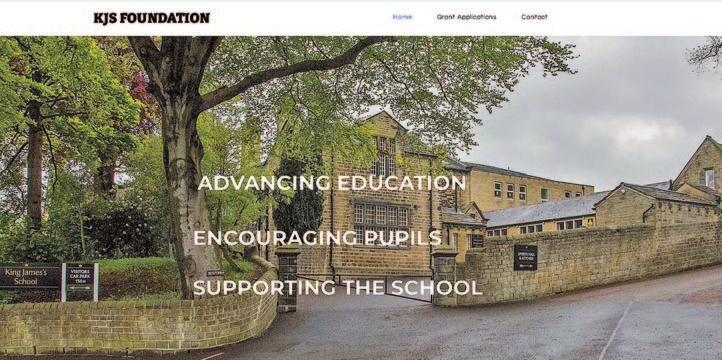
l To provide items, services and facilities for King James's School, or to assist in the provision thereof, as may be agreed with the School Governors, to advance education.
l To promote the education of individual pupils attending the School at the time of their application for assistance, in such ways as the Trustees think fit.
l To promote the education of persons who are under age 25 years who are resident in the Ancient Parish of Almondbury, in such charitable ways as the Trustees shall think fit.
In the past few years, the Foundation has seen the completion of a long-term project to expand its property portfolio by developing the land owned by the Foundation off Westgate and St Helen’s Gate in Almondbury. This investment will guarantee the Foundation’s charitable work for the future. In the past year the Foundation has worked closely with a local Scouts’ group who are using the cricket pavilion on Arkenley Lane while its own building undergoes major repairs.
The Foundation welcomes grant applications at any time, via the application form on the new website. Applicants should have attended or currently attend KJS or live within the ancient parish of Almondbury (see map on right). Projects should be of educational relevance and not eligible for funding through other statutory funding like local authority awards.
There will normally be a maximum grant of £1,000 for any particular project; the amount of any grant awarded will not normally be less than £250. Full terms and conditions are given on the Foundation website. n
CHAIR: Janet Cockroft
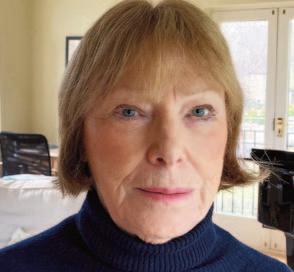
Janet lives in Almondbury near King James’s School and became a Community Governor when Robert Lamb was Head. She was a secondary school teacher for over forty years and worked in Huddersfield and Bradford, finishing her career as Head of Sixth Form. She is a governor representative as a trustee.
As Chair, Janet took over from Colin Bamford, who stepped down in November 2021.
Keith Crawshaw
Andrew Haigh (KJS nominee) Cllr Paola Davies (Kirklees Council nominee)
Christopher Mann
Walter Raleigh (OAS nominee)
Michael Wilson
Patrick O'Brien
Richard Taylor
Anthony Haigh (Clerk)

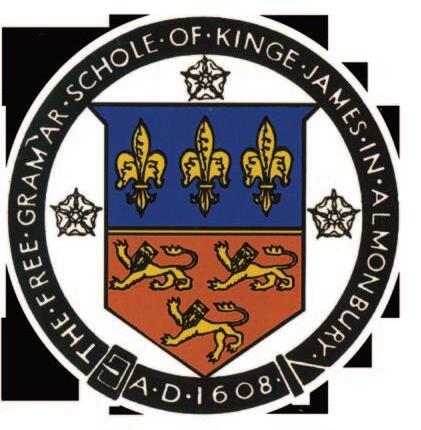
Friday, 24th November 2023
Saturday, 25th November 2023
Report and photographs: Andrew Haigh
THE Founders’ Day service was scheduled to take place on Friday, 24th November at All Hallows’, preceding the Saturday Dinner.
Once again our Society Chaplain, Rev Graeme Carby, had produced a service with appropriate readings and prayers together with an agreed theme for the event with our speaker,Linda Smith. Linda, one of the All Hallows’ Church wardens, had kindly offered her services the previous year after helping with the event As a former teacher with a keen interest in local history she seemed a good fit for the role.
I had been made aware that major restoration work was taking place in the church so after discussions with Ian Rimmer, the Principal at King James’s, together with Abbi Terry, the School’s link with the OAS, it was decided there should be a shortened service with no musical performances as there was simply not enough space available.
However, the Head Boy and Head Girl were to read the lessons with an audience of former students and staff together with some 60 present students.
Unfortunately, all our plans had to be put on hold when just before lunch I received a call from Abbi saying there was a problem as the Sschool was in darkness from a major power cut. All students had to remain with their form teachers, the kitchens had no power so they were trying
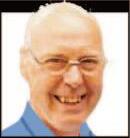
to produce sandwiches for everyone and it was not known whether Ian was going to be forced to close the School. Unfortunately, the students were not going to be able to take part in the service.
I went to the church to see if it had been affected by the power cut but workmen were still busily at work. I contacted a number of people to let them know about the problems. A meeting was arranged for 1.30 at the church to decide what to do. Keith Crawshaw suggested we might want to postpone until the following Friday but this was quickly rejected as a possibility. The workmen had already been sent home in order for the service to take place and so to send them home again next week would push the deadlines for completion of the work even further back.
We decided to go ahead without the school students and Linda said, as her talk was aimed at students, it might be better to postpone that part of the service until 2024.
A small group of OAS members joined us and a very pleasant atmosphere resulted for the short service. The organist led us through the hymns and afterwards the Church Wardens did us proud with their hospitality.
Once again may I thank everyone who helped in very difficult circumstances to make the service a very pleasant experience to all who attended. And may I hope that next year it will be a little less stressful! n
THE number of Almondburians at this year’s Dinner was again slightly disappointing, although we did beat last year’s attendance of 60 – by one! However, the Dinner was certainly a success and I heard nothing but compliments regarding the meal and the speakers, so the occasion must have been enjoyed by everyone there.
In the absence of the Principal this year, due to a clash with his mum’s eightieth birthday, we were delighted to welcome as a guest Abbi Terry, Assistant

Principal at the School and the OAS link member of the senior management team.
Those attending the Dinner spanned a period of seventy-two years, from those who entered the school in 1951 to those who left in 2023 and, of course, current students and staff. The prize for the furthest travelled this year goes to David Smallwood, who travelled from Aquitaine in France to join the Class of 1963 reunion.
On arrival tours of the sSchool, con-
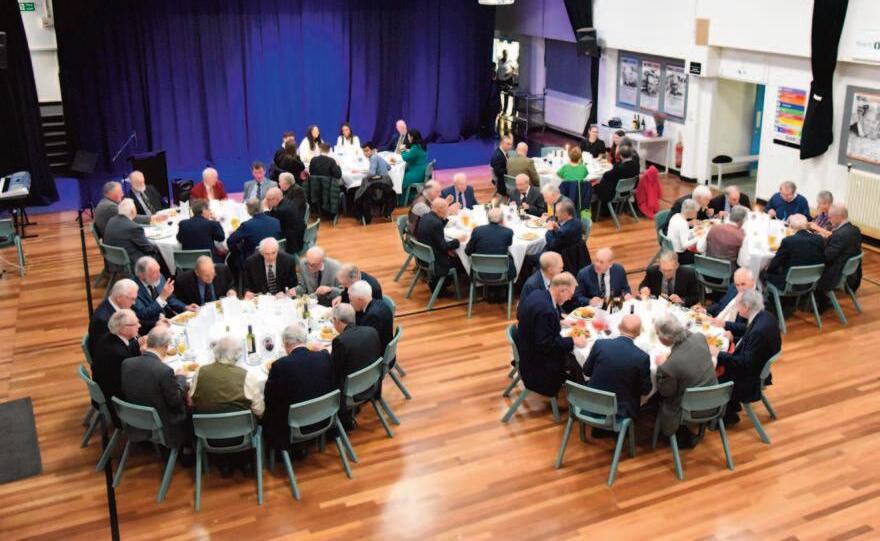
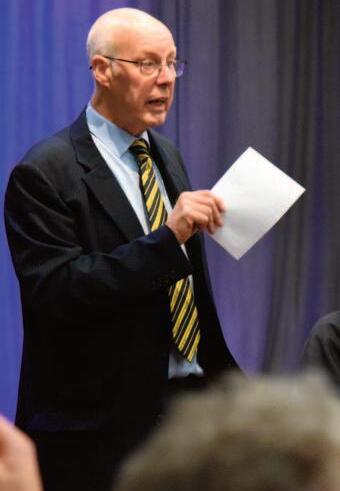
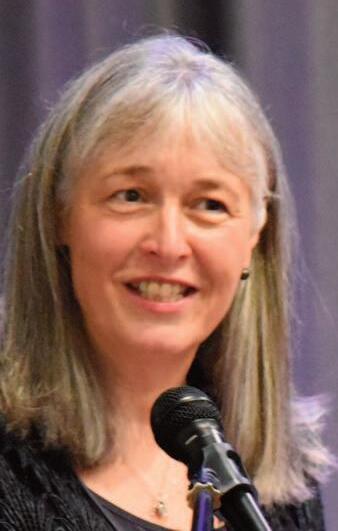
ducted by one of the current students, were available to those who wanted one, before everyone took their seats.
Linda Hyland and her team from the school kitchen served an excellent meal. To start, they offered a choice of cream of tomato soup or creamy garlic mushrooms, both served with a crusty bread roll. The main course was a choice of roast beef and Yorkshire pudding, Florentine fish cakes, or a vegetarian dish, all served with creamed and roast potatoes, baton carrots and Savoy cabbage. For dessert there was a choice of rhubarb crumble served with custard or lemon tart. The meal was followed by coffee or tea and mini mince pies.
On to the formal part of the evening and after the toast to His Majesty, The King, Karen Beattie (née Marsh, K.J.S. 1979-81) spoke interestingly about her career as a teacher and now as a celebrant since leaving King James’s School, before proposing the Toast to the School. A joint response, including news from the School today, was given by the current Head Students, Harry Walker and Demi Hutchison. The decision was taken this year to slim down the formal part of the evening in order to leave more time for socialising afterwards and so the Toast to the Society was proposed by the Chairman, Walter Raleigh, but there was no response this year. After a rousing rendition of the School Song, the formal part of the evening concluded, allowing plenty of time for guests to mingle and reminisce
Surname Forename From To Travel from
Ampofo Nicole
Atkinson Liz. Staff Almondbury
Atkinson Rob. Guest Almondbury
Beattie Karen 1979 1981 Holmfirth
Beverley Richard 1979 1983
Brook John Richard 1963 1970 Leeds
Brook Robert Adam 1966 1973 Alton, Hampshire
Burrie Anthony 1961 1966 Slaithwaite
Cadogan Philip 1963 1971
Calverley David 1963 1970 Beaumont Park
Chavda Aman
Croft David Gary 1968 1975 Almondbury
Davies Gareth Lynn 1954 1956 Sutton Coldfield
Dowling Roger 1952 1959 Lymm, Cheshire
Dyson David M. 1968 1975 Oakes
Field Robert Staff 1989 Kirkheaton
Fisher Dennis 1954 1959 Almondbury
Fossey Sam
French Andrew 1968 1975 Durham
Green Richard 1957 1963 Netherthong
Green Nicole Staff 2010 Netherthong
Griffiths Melvyn 1954 1959 Shelley
Haigh Andrew 1977 1983 Almondbury
Haigh Charlotte 2018 2023 Almondbury
Haigh Eleanor Rose 2018 2023 Almondbury
Harpin David 1962 1970 Birkby
Hodgson Gary 1979 1983 Lepton
Hutchison Demi
Ilchyshyn Andrew 1963 1970 Coventry
Large Peter 1966 1973 Hounslow
further before the bar closed.
Martin Sellens did a tremendous job in gathering together fourteen of the Class of 1963 for a sixtieth anniversary reunion of their entry to the school. Robin Merchant and David Parry assembled six of their Class of 1966 to mark the fiftieth anniversary of their
Surname
Luty Mike 1963 Holmfirth
Makin Chris 1954 1961 Mirfield
Merchant Robin 1966 1973 Kirkheaton
Milne Greame 1957 1965 Cardiff
Morgan Paul 1957 1963 London
O'Brien Patrick Staff 2016 Almondbury
Oughton Richard 1966 1967 Norwich
Parry David 1966 1973 Paddock
Priestley Martin 1963 1971 Lincoln
Priestley, Nigel 1963 1970 Meltham
Raleigh Walter Staff 2010 Almondbury
Roberts Lucie
Deputy Head Girl
Royle Prof Edward 1955 1962 Leamington Spa
Searby Richard 1976 1979 Lepton
Sellens Prof Martin 1963 1970 Colchester
Sellens Dr Graham 1966 1973 Ramsbottom
Sharp John Franklin 1951 1958 Leighton Buzzard
Sheard Ian Charles 1963 1971
Smallwood David 1963 1970 Saucats, France
Smart Andrew Guest Penrith
Smart Dawn 1976 1981 Penrith
Sykes Stuart 1979 1983
Talbot Paul 1963 1971 Dartmouth
Taylor Andrew 1963 1970 Bidford-on-Avon
Taylor Richard 1954 1962 Ossett
Taylor Dennis 1961 1969 Chesterfield
Terry Abbi
Walker Harry
Assistant Principal
Ward James 1957 1964 Slaithwaite
Wilkinson Michael 1963 1970 Much Wenlock
leaving the school in 1973. There were also five members of the Class of 1954 present, who were no doubt warmingup for their seventieth anniversary reunion, which Hugh Lawson and Richard Taylor are discussing for next year’s Annual Dinner.
Thanks are due to many people for
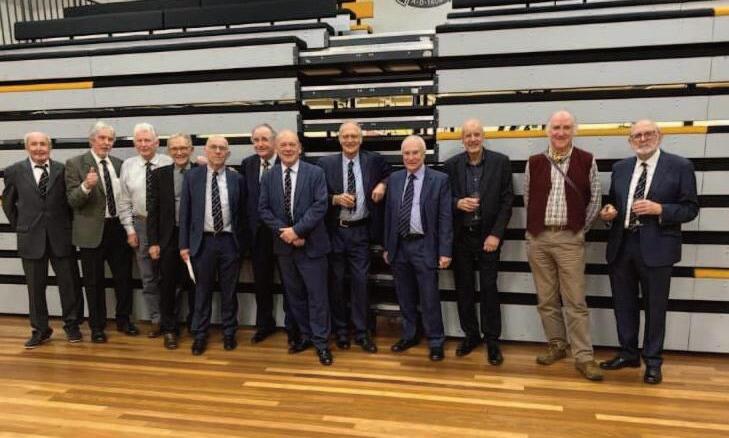
their contributions to the evening. Firstly, to the School for allowing us to use the premises and, in particular, to the Premises Manager, Tony Hyland, for his invaluable help in all kinds of ways to make the School ready for the event and especially for setting out all the tables and chairs, thus making my life so much easier! To Linda Hyland and her team for preparing an excellent meal. To current member of staff Liz. Atkinson and her partner Rob, for once again running the bar with superb efficiency. To Old Almondburian Nick Briggs, of Mallinson’s Brewery in Lockwood, for supplying the beer. To Tim Marriott, of Taste Fine Wines in Almondbury, for supplying the wines and other drinks. To the Head Students, Harry Walker and Demi Hutchison, their deputies, Aman Chavda, Sam Fossey, Nicole Ampofo and
Lucy Roberts, for conducting tours of the School before the meal, for selling raffle tickets with ruthless efficiency afterwards and for being such fine ambassadors for King James’s School. They were so good at selling raffle tickets that the raffle raised an impressive £210 which will, of course, ultimately benefit the School. To our speakers, Karen Beattie, Harry Walker and Demi Hutchison for their excellent contributions to the evening. Thank you also to my daughters, Charlotte and Eleanor Haigh, for helping me to set up the bar on Saturday morning and put the School back to rights by clearing out the bar and mopping floors on Sunday afternoon.
Finally, a big thank you to all the Almondburians who attended and supported the Annual Dinner to make it such
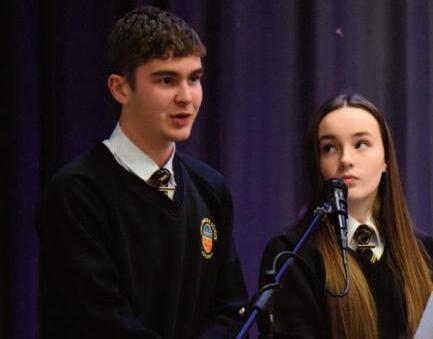
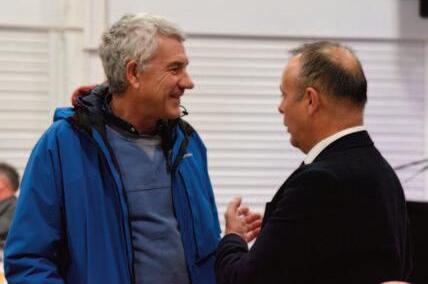
(Top): Head Boy, Harry Walker, and Head Girl, Demi Hutchison
(Middle): Former Head Boy Tim Cater in conversation with Richard Beverley
(Bottom): Socialising after the meal
a great success. The date for the 2024 Annual Dinner will be Saturday, 23rd November, the day before Founders’ Day itself and, as I have already mentioned, Hugh Lawson and Richard Taylor are already thinking about a seventieth anniversary reunion of the Class of 1954. There must be plenty of other anniversaries worth organising a reunion for next year too, so do give it some thought. Of course, you don’t need the excuse of a special year to have a good time at the Annual Dinner, so put the date in your diary now and get together with some old school mates to make sure that you don’t miss out on a most enjoyable evening! n
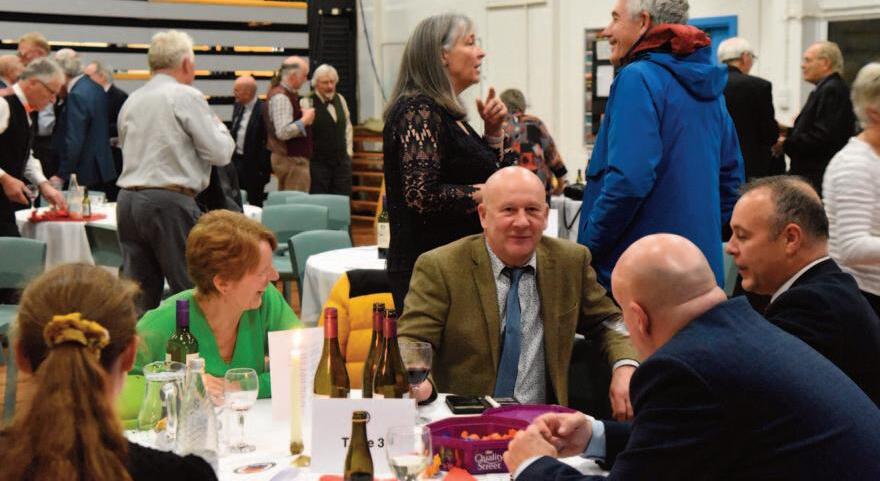
An update for those living out of town on what’s hitting the headlines
CULTURAL HEART
DESPITE national financial stringency, work is about to start on a major £262m plan, known as ‘Huddersfield Cultural Heart’ to redevelop Huddersfield town centre. Work on phase 1
of the project, costing £57m, is expected to commence in June/July 2024. It will involve the refurbishment of the former Queen Street Market and its conversion to a Food Hall.
The existing east wing of the building,
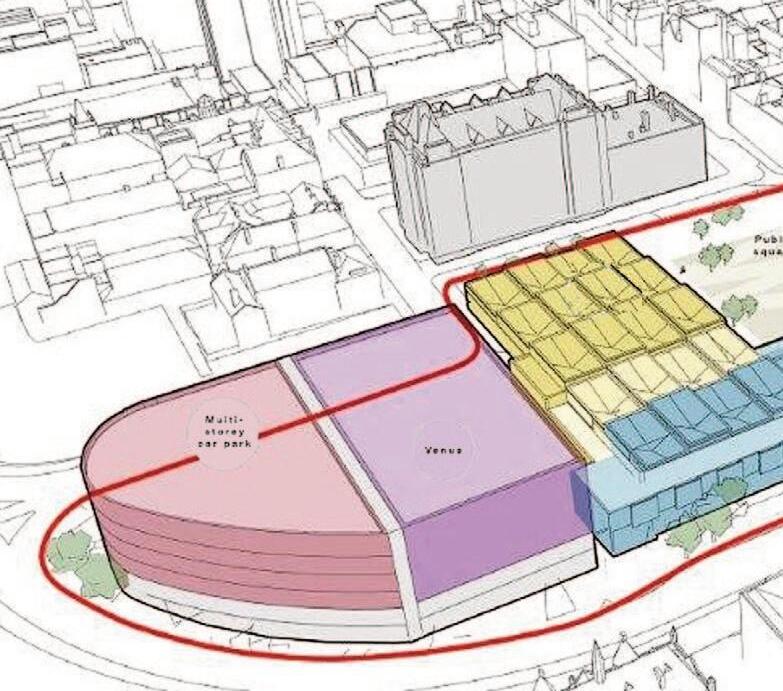
with a glass-fronted extension, will beconverted into a new Public Library. The Food Hall and Library will open out into a new public square which for events and gatherings.
Both the Food Hall and Library will open out into a new public square, which will host events and gatherings.
The Food Hall project received a major boost last November when Levelling Up Secretary Michael Gove announced funding of nearly £17 million thanks to the scrapping of the Manch-
ester leg of the HS2 high-speed rail link.
The second phase of the Cultural Heart project. expected to cost nearly £37m, will involve the conversion of the former Public Library into a Museum and Art Gallery.
MANY Almondburians will have fond memories of the museum at Ravensknowle Park, just over a mile from the School. The Tolson Museum is housed in Ravensknowle Hall, built in
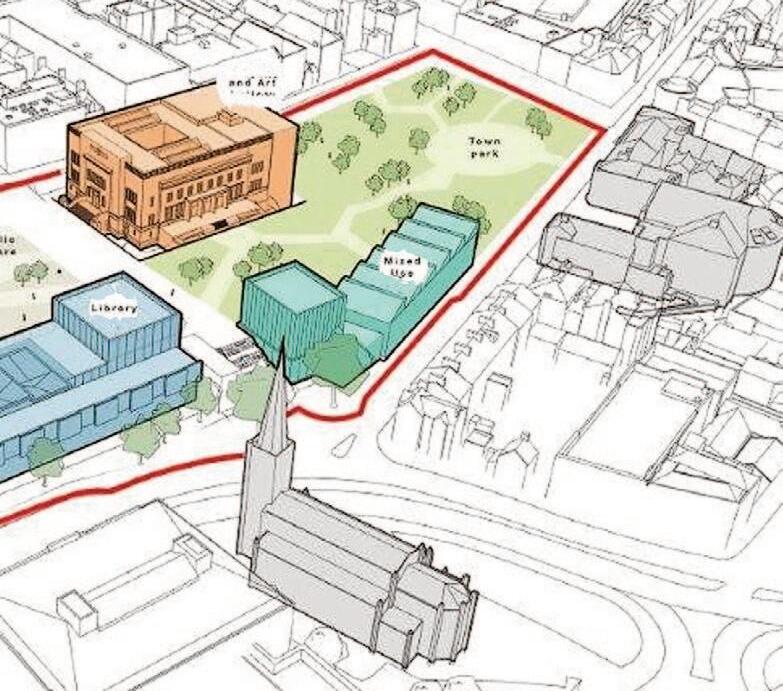
the 1850s for textiles magnate Richard Beaumont. His heir, Legh Tolson, left the building to Huddersfield Corporation in 1919 in memory of two nephews who were killed in World War 1. The museum was revamped from the 1980s to feature the industrial history of the Huddersfield area.
Following suggestions that the building required roof repairs costing up to £2m, Kirklees announced that the museum would be closed in 2014. However, following widespread protest, it was subsequently reprieved.
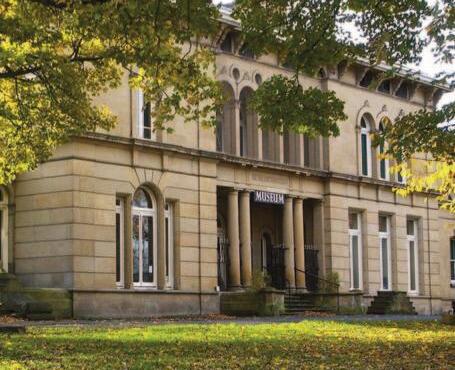
The current plan is for the collections to be transferred to the new town-centre museum in the Cultural Heart, but last November a petition was launched to keep the Tolson Memorial Museum in its present home.
THE former Almondbury Library, in Stocks Walk closed in 2019 when its
o perations moved to new premises in Farfield Road. It was a Carnegie building, one of the libraries funded around the country by Scottish-born philanthropist Andrew Carnegie who made great wealth in the USA through investments.
The Almondbury Carnegie Friends Group (ACFA) hoped to secure the building through a Community Asset Transfer to form a new community centre, but last October came the news that Kirklees Council plan to sell off the building as part of a review of its estate in a bid to make a saving of almost £48m and avoid effective bankruptcy.
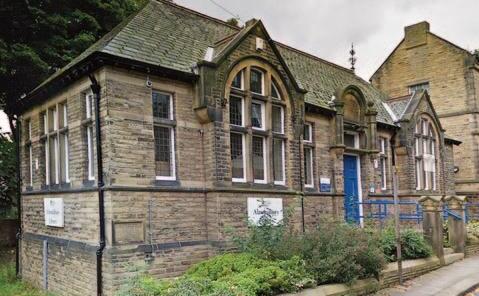
The Group is now organising public meetings in the hope of purchasing the building through a ‘levelling up’ application or through online ‘crowd funding’.
AT first glance, the photograph here might suggest that what was once Huddersfield’s premier hotel, closed since 2013, has at last been restored to its former glory. However, the camera lies: the building has been enclosed for months in a realistic photographic shroud while work proceeds slowly within.
Kirkees Council cannot give a completion date for the £20m project, though it seems likely that it will not be until 2025.
When it opens for business as a prestigious Radisson hotel, it will have 91 rooms and a 70-seater restaurant and bar. The hotel will also boast a large conference room and 100-cover banqueting suite.
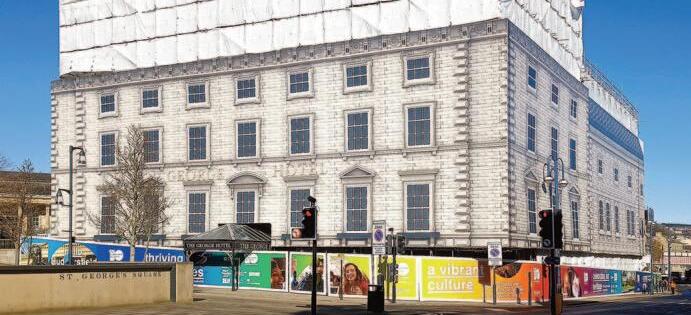
THE death has been announced of Huddersfield Station’s senior pest controller Felix. Angie Hunter, Huddersfield Station Manager for TransPennine Express, said: “Felix was more than a cat; she was a beloved member of our station family and left her paw prints on many commuters’ hearts as they passed through the station.”

Felix was born in 2011 and joined the team at Huddersfield six weeks later. She spent most of her life on duty at the station. Bolt, Felix’s apprentice, joined the team in 2018 and both have featured in calendars and books, raising more than £240,000 for charity.
A commenorative calendar is on sale at felixandbolt.co.uk. Felix, born 17th May 2011, died 2nd December 2024, aged 13.

There’s little doubt that if Margaret and I had not taken a certain decision on a journey along the northern coast of Scotland, I should not be around to entertain you with this story.
DURING the long school summer holidays in 1989 we decided that having travelled round much of northern Europe in July, we really ought to explore more of the UK. John O’Groats seemed a good destination from where we could visit some of the more remote parts of Scotland. Having ticked off this northerly outpost we drove along the dramatic east to west road with many a rounding of inlets, with the intention of reaching Cape Wrath’s towering cliffs. Fate intervened and decided we should stay at a bed-and breakfast near the Kyle of
Tongue. Our hostess recommended a local hostelry for sustenance.
While enjoying our first round, a man, aged mid-40’s we guessed, approached our table and asked if he could join us. I suppose we could have refused but it was not easy to find an immediate reason. He insisted on buying us another round and thereby secured our company for at least another 15 minutes. Very soon into a one-sided conversation I had decided this was a Walter Mitty character. He owned a large yacht, normally moored in Mevagissy, which he had been sailing
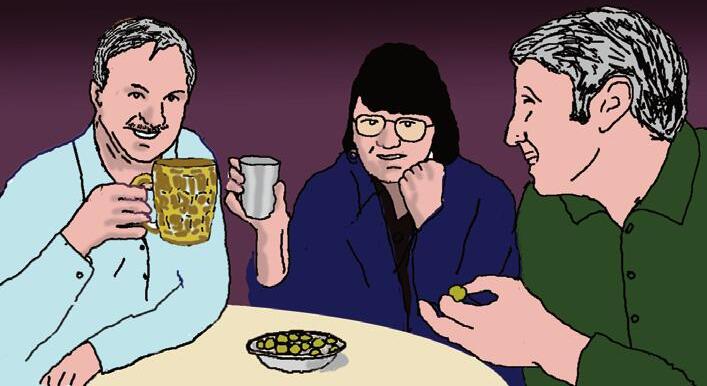
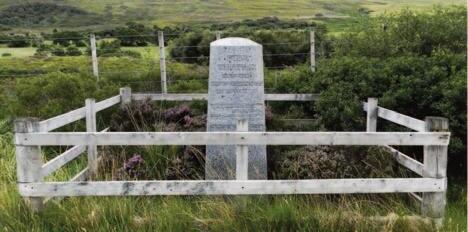

The ‘Clearances’ was the forced eviction of Highlands tenants in the period 1750-1860. The Clearances Monument, which Newcombe professed himself keen to show Dave and Margaret Bush, is located near the ghost village of Scrabster, a lonely 40-minute moorland walk from Tongue. It commemorates the poet Ewen Robertson (1842-1895), the ‘Bard of the Clearances’.
north to visit relations in the northern isles. I soon turned off but I do recollect that he said he had forbidden his girlfriend from staying on board as she wanted to wear high heels on his freshly varnished deck. All this time Margaret had been studying his appearance in fine detail. (Is the female of the species naturally more observant than the male?) When I finally succeeded in persuading him that we were tired after a long day and wished to return to our guest house he was very reluctant to let us go. There
was a full moon on a clear night and he would very much like to show us a monument to The Clearances (left), within a few minutes’ walk. We escaped. There was an eclipse later which Margaret wished to see but decided it was safer to stay indoors.
Fast forward, back down the west coast of Scotland and to Huddersfield. A few days later, while watching the BBC evening news a picture appeared on the screen. “This man is wanted in connection with two murders. If you have seen him, please contact your local police station”. I clearly recall how Margaret and I looked at each other in momentary stunned silence. “That’s him, our unwelcome fellow drinker in Tongue”. I rang the police immediately. Almost before I had put the phone down, a policeman and policewoman were at the door. They took down some details and assured us of another police visit the following day.
This time the officer wrote in long hand some six pages of notes. Margaret remembered the suspect’s immaculate trainers, his black-faced watch, the black curly hairs on his chest and his generally well-scrubbed appearance
which could well have been of significance When completed, I was asked to read it through and sign it if I was happy. Here my schoolmasterly pedantry came to the fore. The report was full of spelling mistakes and grammatical errors. I explained my dilemma, received permission to make corrections and duly signed. I bet he thought “What a pain!” ...and rightly so.
The next we heard was that a man had been arrested in the East Midlands on suspicion of having committed two murders. A policeman noticed his car had its registration letters made of black insulation tape: not surprisingly it had been stolen. The first murder had been a ‘brutal’ attack on an 88-year-old man in his garden shed in Ingleton, north Yorkshire. The second was near Tongue! The victim, called Margaret, had been hit over the head with a large stone on the very day of our encounter in the hotel. Our imagination quickly led us to an explanation of his ‘well-scrubbed appearance’. More alarmingly were further thoughts on why he was so keen to show us the monument. Was he in a murderous mood? What had he planned? We could conclude only that our lives had been in danger.
‘Our murderer’, as we somewhat flippantly termed him, was remanded to Leeds prison or to

SHORTLY before meeting Dave and Margaret Bush, Brian Newcombe – under the name David Kerr – engaged in a whirlwind ‘romance’ with 47-year-old widow Margaret McOnie. Within days they became engaged, and in early August they booked into a guest house in Tongue. Three days later they went for a walk: this was the last time Mrs McOnie was seen alive.
Her body was found on the moors nearby. She had been bludgeoned to death with a large rock.
At the subsequent trial, Newcombe confessed to the killing not only of Mrs McOnie but also, two weeks earlier in Ingleton, to the murder of an 88-year-old pensioner Jack Shuttleworth.
Using a variety of false names including David Rodgers, Richard Grieves, Phil Kerr and Dr Stephen Barbour, his routine was to travel the country, booking in at hotels and guesthouses for a few days and leaving without paying the bill. He would charm any woman he chanced to meet on his travels and help himself to their cash and jewellery. Newcombe claimed to be in the yachting business, with a £65,000 yacht moored in a Scottish port. In fact, he was an unemployed Nottinghamshire motor mechanic.
Newcombe confessed to both murders but before he could be brought to trial he hanged himself with knotted bedsheets in Leeds’s Armley Prison in November 1989.
Armley Jail as we knew it. It was close to where Margaret and I had our first flat. Many more details emerged about him. He was a very complex character and murder was only one of his criminal activities. He was a con- man par excellence. He considered himself ‘God’s gift to women’, acting under numerous aliases including ‘Dr Stephen Barbour’ and was ‘stupendously wealthy’. In reality, he was an unemployed motor mechanic from Nottingham. Actually he had acquired some wealth, for not only had he committed numerous bed-and- breakfast frauds, he was guilty of a string of thefts. The £200 stolen from the murdered pensioner was minor when compared with the £35,000 theft of jewellery from another house. The case was sure to be complex and prolonged.
We were told that we should hold ourselves ready to attend his trial which would take place in Inverness sometime in November. We would be ‘key witnesses’ as we could confirm his
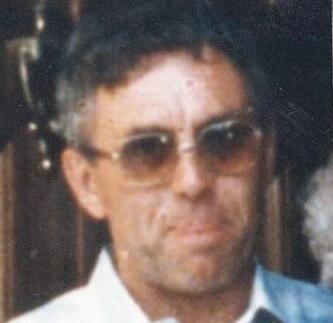
whereabouts on the day of his second murder. We were quite looking forward to an extended break from school towards the end of what was always a very tiring autumn term.
It was not to be. On Monday, 13th November Brian Newcombe committed suicide.
That night there was a full moon. n
SUDOKU
Difficulty: gentle
Each row, column and 3 x 3 box must contain the digits 1 to 9
A watercolour painting shown in a recent issue of The Almondburian reminded our writer of a painting by a different local artist he had purchased many years ago.With the help of Huddersfield Art Society, he learned an unexpected reason why the paintings were so similar in style.
Iwas impressed by the use of a watercolour on the editorial page of the July 2023 issue of The Almondburian. It was by Stanley Chapman from Brighouse, who was a pupil at Almondbury Grammar School from 1925 to 1928. He was taught Art by Edward Akroyd (‘Teak), who had joined the School only three years earlier.
I discovered that Chapman had worked at J C Bottomley & Emerson Ltd, a paint, varnish and dye manufacturer at Brighouse and Longroyd Bridge. On searching online, I came across a fine painting by him of Burnham Overy Staithe. This caught my eye as it is on the north coast of Norfolk, not far from Norwich where I live. It was painted in 1980. Stanley was born in !913 and died in 1989.The one used in the magazine was of the front of the old part of the
School and I wondered who had offered it to be used in the magazine. Every picture tells a story and it is great fun finding out more about them. When our group of ’47ers had a reunion last year, I mentioned how much I had liked the use of the Chapman painting. One of our members (who shall remain nameless for security reasons!) casually mentioned that he had four of his works at home. What colour is envy?
The Chapman painting reminded me very much of a similar painting I acquired in the late 1960s, on a return visit to Huddersfield. I visited an art exhibition in a sports hall in the town and was attracted to - and bought - a watercolour by Ernest Midwood of a scene in Hinchliffe Mill, Holme. It was so typical of the area I had left behind on my journey south to pastures
JAMES CLAYTON left AGS to take up an apprenticeship as a compositor with Huddersfield printers Netherwood & Dalton. Later he worked at the Halifax Courier and then the Huddersfield Examiner. In the early 1960s, he joined Her Majesty’s Stationery Office in London as a print buyer for various government departments. He then lectured in typography at the College of Further Education in Dunstable and then the Norwich City College of Further and Higher Education.With the growth of computer technology, this became absorbed into the Department of Information Technology, where he stayed until his retirement in 1996.
Now living in Norfolk, James continues to enjoy retirement life.


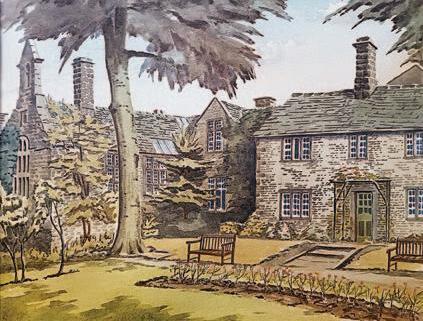
new. I knew nothing about where precisely it was painted or indeed nothing about the artist. In 2008, however, my good friend and schoolmate, the now late Keith Brier, who lived in Holmfirth, came to the rescue. I sent him a photo of the painting and asked if he could pinpoint the location. Keith was passionate about the textile industry, having spent his working life there; he was also
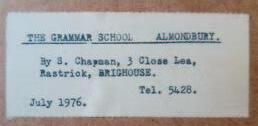
Top:The watercolour by Ernest Midwood acquired in the late 1960s.
Left: The watercolour in similar style by Stanley Chapman, now in the possession of the School
Above: Label on the back of the School’s Chapman painting
deeply interested in local history, so he was delighted to be on the case. This is a brief extract from his reply:
“As soon as I received your picture, I knew straight away where the painting was. The road is called Old Road and until the early 1800s was a part of the main road from Huddersfield over Holme Moss to Cheshire, etc. When the ‘new’ turnpike was con-
structed, to the left-hand side of the painting, the road was still used for local access. Just out of view at the bottom of the picture is Hinchliffe Mill, the home ofWhitely and Green since 1879 until around 1999 when the manufacturing was closed down.
“In February 1852, during the night, the Bilberry reservoir at the foot of Holme Moss burst its banks and washed away the houses seen over the roofs to the right of the painting on the river bank. Many people were drowned as they slept.A national disaster appeal was made and a large amount of money raised.When everybody had been compensated and all bills paid there was a surplus. Rather than fritter the monies away, being honestYorkshire folk, they gave the moneyback to the donors, creating a lot of goodwill.”
I reckon I got a good two-pennorth's worth when Keith came to my aid.
The second phase of this story concerns one of our ’47ers luncheon reunions, at the Old Bridge Inn at Ripponden in 2018. On the way back to Huddersfield, I persuaded my driver friend to drop me off in Halifax. I used to work at the Halifax Courier for a short time in the late 1950s and fancied a look around the town. The Piece Hall was still be-
ing renovated so I missed out on that. I did enjoy going into the indoor market and contrasted that with the public vandalism which saw the demolition of the Market Hall, Pack Horse and Shambles in Huddersfield. Outrageous. However, moving on, I had time to enjoy a pint in Wetherspoons and drank to the Cat’s Eye inventor, Percy Shaw. Later I found myself going into a charity shop, searching for that long-lost work of art which would be worth a fortune. This was not to be, but a lovely watercolour got my attention and to my delight it was by Ernest Midwood. It now hangs in my hallway.
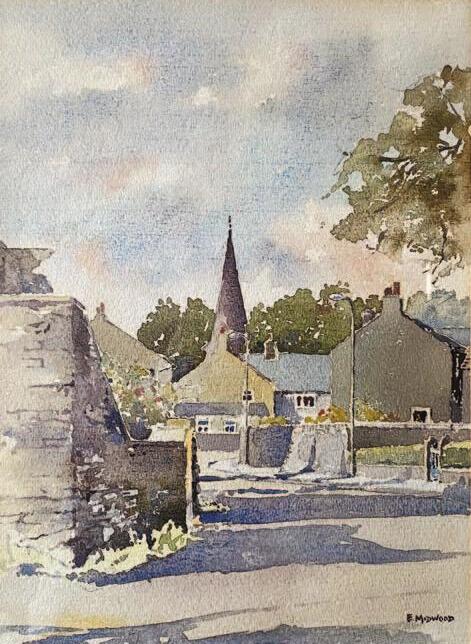
Edward Akroyd came to Almond bury Grammar School, as it was then generally known, as a parttime teacher in 1922. He became a full-time Art and Woodwork mas ter a year later and retained this position until he retired in 1957.
A quiet, unassuming man, he became a conscientious objector during World War 1 as a result of which he spent some time in Strangeways Gaol, Manchester.
At AGS he was quickly drawn into a wide range of school activities and, per haps surprisingly, was a keen footballer and tennis player in his younger days. In the staff room, he was a keen debater, invariably taking the side of the underdog.
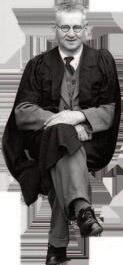
in Station Road until they formally objected.
Today, Teak is chiefly remembered for his many past contributions to the artistic life of the School, ranging from set designs for comic opera productions to all manner of drawings and paintings related to School activities.
Below: ‘Angler on the Riverbank’, watercolour by Edward Akroyd
Akyoyd was a keen member of Huddersfield Art Society for many years and again had a reputation for his lively arguments with fellow members. Never one to undervalue his own talents, he started offering paid lessons in the Society’s rooms
I knew very little about Ernest Midwood other than he had an Almondbury address and was born in 1917 and died in 1993. However, I contacted Huddersfield Art Society and was delighted to receive this response from the Society’s archivist David Whiting:
“Ernest Midwood (1917-1993) was President of HAS from 1974-1978. He served in World War 2 and became a prisoner of war in Austria.Whilst there he painted scenery for camp shows.After the war he studied art under Edward Akroyd, joined HAS in 1959 as an associate member, becoming a full member in 1963. In 1964 he took on the role of Treasurer on the death of John Dransfield, and served in this role for four years. He became a very competent watercolourist, his work selling well both locally and further afield. His painting of Pack HorseYard was
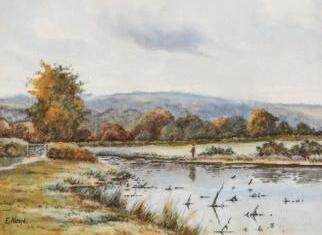
presented to Prime Minister HaroldWilson. His jovial informality as President contrasted with the more academic approach of his predecessors. Following the end of his term of office in 1978 he remained on the Council until his death, mainly as aVice-President.
“Individual recollections of HAS members: ‘Always painted the local pub on HAS outings, then went in the pub to get them to buy the painting.Always used the same size, same colours, same skies’”.
How fascinating it was to learn that Ernest Midwood had learned his watercolours skills from Edward Akroyd, the same Almondbury Grammar School art master who had taught the same skills to the young Stanley Chapman almost 100 years ago.
So, perhaps I did find my ‘long lost work of art’ that day in Haliax in 2018… n

1. Worried, I email police – dog disease related. (15)
8. Stop before opening. (7)
9,25. Firm downgraded match for strange work by 12. (3,4,3,7,5)
11,14. Thus vied with bestseller for corrupt work by 12. (4,2,3,12)
12. Robust writer. (5)
14. See 11.
16. Rushed fiddle playing here. (12)
20. Not important, it leaves competitor. (5)
21. Dread memories lengths. (9)
23. Disorganised, I arrive in the South of France. (7)
Entries to the Editor (address/email: back cover) by 31st May 2024. Prize: 12 months’ free OAS membership Name Email Tel
l The winner of Crossword by Hérisson (November 2023) was Kim Dyson (1948-54)
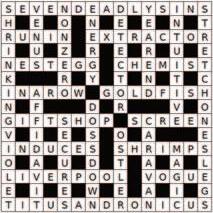
24. Troops’ damage limitation not abandoned. (7)
25. See 9.
DOWN
12. Disperse about in the sky in August. (8)
3. It goes into 501+6, therefore right. (7)
4. Pit areas are dangerous! (10)
5. Egg-shaped tests here. (4)
6. Blow up home apartment with early start. (7)
7. Misses nothing in aerial survey, initially. (6)
10. Cold winter in Paris borne by Carol. (9)
13. Insect searching for river pastime. (3,7)
15. Disapproval displayed by a foggy aspect. (1,3,4)
17. Gold and nickel mixed with rum element.(7)
18. Before terrible liar enters, before. (7)
19. Finale from Helsinki, by the sound of it. (6)
22. Nudge drop-out. (4)
First stimulated by the tragedy of the Indian Ocean tsunami 20 years ago, I have recently published a new poetry collection about the sea. But recent events in the Red Sea have already caused me to amend one of the poems.
RECENTLY I published my 18th collection of verse – Twelve Poems of the Sea. I had not planned to produce a further collection this year but in the course of preparing an hourlong presentation on the Poetry of the Sea ranging from Coleridge’s Rime of the Ancient Mariner to Masefield’s Sea-Fever, and Arnold’s Dover Beach to Whitman’s Cab -
in’d Ships at Sea I found myself drawn to writing poems of my own.
My Twelve Poems of the Sea include poems on physical features both on the surface and subsea. Other poems are about creatures that live in the sea. There is an undercurrent of concern about exploitation of the sea’s resources.

One subject which I had particularly in mind was the Indian Ocean tsunami of December 2004 which killed almost a quarter of a million people in 14 countries and caused immense destruction. This gave rise to the poem in the new collection – Birth of a Tsunami .
DAVID MORPHET left KJGS to gain a Double First in English at Cambridge. He entered the Diplomatic Service in 1961 and later moved to the Department of Energy and the private sector.A successful poet, David is widely respected for the breadth of his themes. He has published 18 collections of poetry under his own imprint Notion Books.

But another poem in the collection – Straits – has already been considerably underplayed by current events in the Red Sea. To reflect these I have already had to amend this poem with a sharper focus on ‘straits’ (see panel). Further details of the collection and of my poetic work over the past twenty years and more is to be found at the website www.notionbooks.co.uk which has recently been completely redesigned. n
The Great Marine Repository
Capes
Gulfs Straits
Dirge for Kelp
Manatee on the edge
A taste of Bêche-de-Mer Plankton
\Vhale fall
Black smokers
Birth of a Tsunami
The Sea is always Master
Price: £5
24 pages, soft-back, 200 x 30 mm
Available from Notion Books. 11 Daisy Lane, London SW6 3DD. www.notionbooks.co.uk
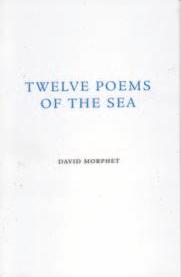

Oceans lead in strange directions. They hide a plethora of rocks and shoals. They host abundances of straitsof which the dogleg of Malacca counts as king and cynosure. Here whales observe each day the passing of a hundred hulls.
Then there’s Magellan’s knife which cuts a continent in half and joins one ocean to another.
At a sea-ward corner of Arabia is a strait which has the power to choke the passage of a thousand ships.
The Bab el -Mandeb, Gate of Tears, opens a double door to lead the Red Sea out to India.
The world’s commodities pass by its arid hinge-isle of Perim, in fair times unimpeded.
The hairpin of Hormuz curls round Arabia’s angle to unlock the oily coffers of the Gulf.
Uneasily the mega-tankers thread their yet unbroken passage through contested waters.
Straits are expedient but fortuitous and do not lend themselves to change. We have to take them as they are.
Man-made Panamas produce new schemes of navigation. But straits are jacketed, and sometimes choke.
Roger Sykes (1946-1953) revisits some of his favourite drawings
HIS was originally a sketch for the ‘In & About’ column of the Huddersfield Examiner.
The way to enjoy the ride – in a trolleybus – was upstairs on the front seat. This was my daily commute from Almondbury via Huddersfield and over the Ainleys and Elland in the West Riding.The pinch point was Birchencliffe with the narrow rocky wall and no pavement on one side – exciting if another bus came along – the ‘give way’ game! One winter led to skidding with the rocky wall looming too close!
The distant road curls up to the new big roundabout for the M62 junction and the two bridges at the top of the road have been replaced by the long tunnel under the motorway.This was the Borough Boundary - and I was often asked to pay a halfpenny extra to travel via Elland to West Vale, followed by a walk up Greetland.
I was 89 this month so few other people would now remember the old No 30 trolleybus route and the narrow rocky Birchencliffe.
The trolleybuses do have a retirement home – so you can still go for a ride!
l The Trolleybus Museum at Sandtoft, near Doncaster, has the largest collection of preserved trolleybuses in the world.They include Huddersfield trolleybuses numbers 541, 619 and 631 which all remain in excellent running order despite being around70-80 years old. (Ed)
Only the rocks remain: the A629 Halifax Road through Birchencliffe, now widened, rises towards the presentday M62 roundabout.
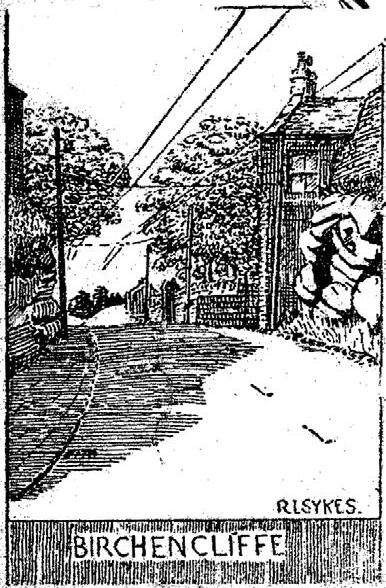
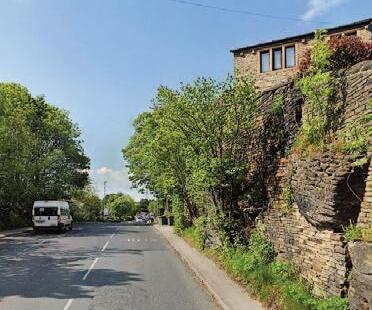
My career in special metals has taken me all over the world, writes ‘Lofty’ Lofthouse. But today it’s my love of horseracing that gives me the greatest pleasure.
IT all started back one day in 2011 when I was invited by a good friend, who happened to be the raw material manager for Rolls Royce from my working days, to join him at Beverley races where a horse he was involved with was running. I readily accepted, even though my previous involvement in horse racing had been having a wager on the major races such as the Derby and the Grand National.
The day began with lunch in the Owners’ and Trainers’ dining room and when it was time for the race we assembled in the paddock to meet the trainer and jockey to discuss tactics. In the event the horse, Saint Thomas, was victorious and, following a debrief in the winners’ enclosure we were invited into a room to drink champagne to toast the winner. I was invited
several times over the next few years but work commitments prevented me from further involvement.
My main outdoor activities over the years had been hiking, golf and squash. I had given up the latter in the 1990s but had continued with the other two. By the time of my second ‘retirement’ my golfing prowess had started to decrease dramatically (my handicap was no longer a respectable 10) and hiking was reduced to ever-decreasing distances.
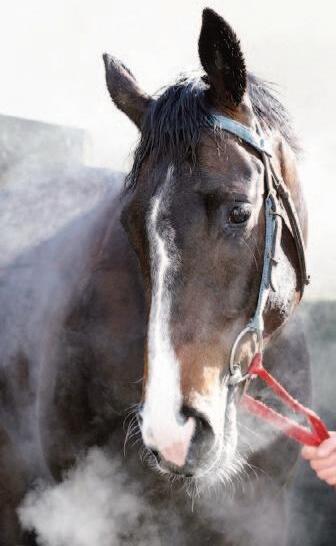
It was then that the idea of racehorse ownership began to enter my thoughts and I took the first tentative step with a small share in a horse called Perfect Symphony which ran six times before winning at Newcastle in October 2016. The emotion of ‘your’ horse finally passing the winning post in first place is quite exhilarating and
in my imagination akin to an athlete winning a gold medal. I was ‘hooked’.
Although my full name is John Howard Lofthouse, I was quickly christened Loft or Lofty at school and these are the only names I have used ever since whether in business or among friends. A proud Yorkshireman, I was born in Doncaster in 1940. Father was a police detective and the family moved each time he was promoted. We went from Doncaster to Harrogate to Tadcaster arriving finally in Huddersfield in May 1952.
Having begun grammar school life inTadcaster, I started at Almondbury Grammar School part-way through the first year of the class of 1951.The good thing about joining mid-year was that I avoided the initiation of being thrown down the ‘bunk’. Being alphabetically adjacent to George Law, he and I spent the rest of school life sitting next to each other.We became firm friends which is still the case to the present day.
I passed nine ‘O’-levels, failing only in English Literature (never my strong point). For the 6th Form we had a simple choice – Arts or Sciences. Unsurprisingly I suppose most of the sportingly inclined pupils chose the latter which com-
prised Maths, Physics and Chemistry with a possibility of Biology.The most pleasing result of ‘A’-levels for me was in Physics. In the mock exam I panicked (for the first and only time in an exam) and received a mark of 8% (higher than I actually expected). In the actual ‘A’-level exam I was awarded the School Physics Prize for the top mark which surprised a certain Physics teacher but not me of course!
I had contemplated penning a few words about some of the teachers at KJGS during my time there but, in this increasingly litigious world, I decided on discretion – maybe another time…
In terms of school life I was in Dartmouth House and became Head of House in the 6th form with George Beach as Housemaster. Having been made a Prefect in the 6th form I became Deputy Head Boy in my final year.
On the sporting front, whilst football and cricket were our main activities, the aforementioned George Law and I were never beaten as a pair at badminton. Playing for the 1st XIs at cricket and football played a major part in my overall enjoyment of life at KJGS.The highlight for me was being a part
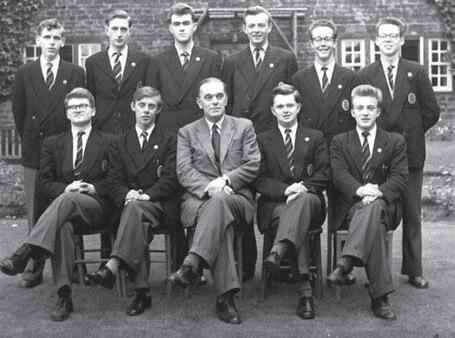
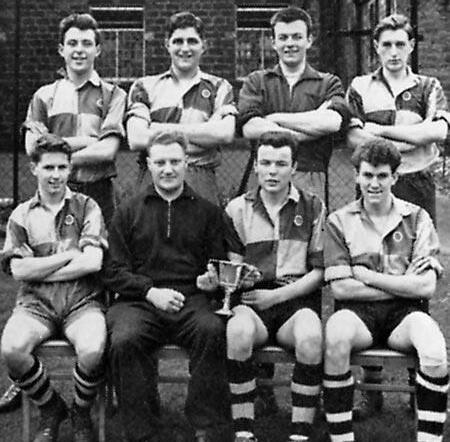
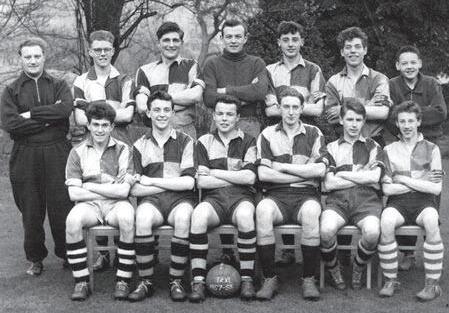
of the victorious team which won theYorkshire Grammar Schools 7-a-side football tournament. This team was pretty much unbeatable and the side was John Adams, Barry Brook, Brian Firth, Charlie Hall, George Law, Rodney Walker and I.
After the ‘A’-level results I was awarded a Huddersfield Borough Scholarship to read
Top left:The King James’s Grammar School side which won the Yorkshire Grammar Schools seven-a-side competition at Harrogate on Saturday, 21st March 1959.
(Back row l-r): John Adams, Brian Firth, ‘Lofty’ Lofthouse, Rodney Walker
(Front row l-r): Barry Brook, Ken Ireland, George Law, ‘Charlie’ Hall
Bottom left First XI soccer team 1957-8.
(Back row l-r): Ken Ireland, Stuart Holmes, Brian Firth, ‘Lofty’ Lofthouse, Ian Matthews, Malcolm Molloy, David Billington
(Front row l-r): ‘Charlie’ Hall, John Adams, George Law, Rodney Walker, Barry Brook, Bernard Pinder
Chemical Engineering at Manchester University. My life story takes quite a twist at this juncture as (for reasons I won’t go into here) I was sadly unable to take up the scholarship.
I subsequently applied to, and was accepted by, the Brighouse iron foundry of J Blakeborough & Sons to go on a sandwich course in Metallurgy –not a subject we’d been made aware of at Almondbury – at Sheffield Polytechnic (later to become Sheffield Hallam University). Having obtained the industrial equivalent of an Honours degree I went to Sheffield University to do a Masters degree. At university I played for the 1st XIs at cricket and football.
After a couple of years in the foundry at Blake-
borough’s I joined the member services department at the British Cast Iron Research Association (BCIRA) at Alvechurch, south of Birmingham.We were responsible for visiting the many iron foundries across the country (few left today) to solve their production problems whether associated with metal, sand or casting defects.
In 1970 I joined London & Scandinavian Metallurgical Co Ltd (LSM) in Rotherham and was happy to move back to Sheffield where I have been based ever since. LSM produce metals and alloys for a variety of applications including aluminium, iron, steel and superalloys. Superalloys are generally nickel-and cobalt based alloys which offer a combination of heat resistance; high temperature corrosion resistance; toughness and strength. Applications for superalloys are manifold but by far the largest is for Aerospace.
I joined the sales department initially and eventually became General Sales Manager. LSM divisionalised in the early 1990s and I became General Manager of the Special Metals Division. This included two production plants, one producing chromium metal by aluminothermic (exothermic) reduction and the other producing
nickel boron and ferro boron by a carbothermic (endothermic) reduction process. Chromium metal was the most important product made and had a major influence on the rest of my career. Chromium was an essential ingredient for the production of jet engine turbine blades from superalloys, the main producers of which were Rolls-Royce in the UK; Snecma (now Safran) in France and General Electric and Pratt &Whitney in the USA.
When LSM, in its wisdom, de-divisionalised I reverted to being General Sales Manager and travelled the world in this capacity. Over the years, I visited North and South America; Europe; South Africa; Russia; China; Japan and Australia – there are not many countries left on my bucket list.
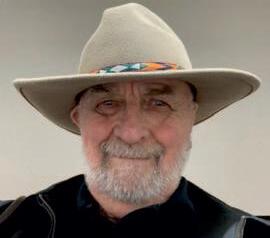
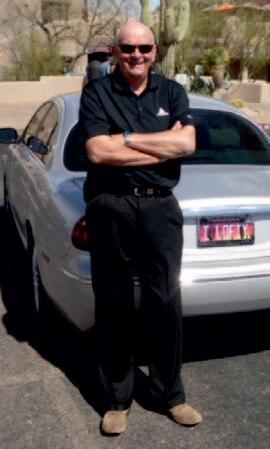
The major chromium metal producers in the west, following the closure of the sole US producer and two smaller UK producers, were LSM in the UK and a French producer Delachaux.They were a dominant force in the field and still are to a great extent. Apart from these two companies there were a few less influential producers in China and Russia. I retired from LSM in 2004 after 34 enjoyable years.
A short time after I retired I was approached by a London-based compa-
ny who traded chromium metal from China and Russia but were having little success in the USA which was by far the largest market. Suffice it to say, after I formed my own company, Lofty Special Metals (LSM!) in 2005, I took on the sales of their chromium materials, especially in the States. This was extremely successful.
I purchased a condominium on a golf course in a place called Cave Creek just north of Scottsdale, Arizona. Although it was very hot in Arizona, unlike Florida it was not humid, had no ‘bugs’ and no hurricanes. I had many UK visitors in the years I spent there and devised a special tour which took a week or more.The stops included Sedona and the Grand Canyon in Arizona; Monument Valley and Bryce Canyon in Utah; Death Valley in California; Las Vegas and the Hoover Dam in Nevada before returning to Cave Creek via Phoenix. Another popular trip was in the south-west of Arizona to Tucson and Tombstone. The latter was of course where the legendary fight between Wyatt Earp, his brothers and the Clanton’s and McLaury’s in 1881. An eerie epitaph in Boot Hill states:-
In 2016 I retired for a second time – this time for good.
Since that first horse and first victory a decade ago I have been involved with 17 more horses, with varying degrees of success. Overall I have had 25 winners from 125 runners and I feel very lucky as the strike rate of 20% is very high indeed.There have been a few horses which never won
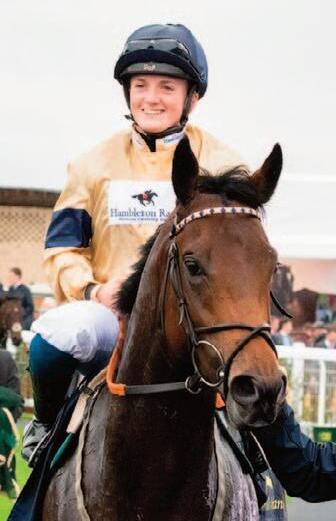
a race and one who never ran because of injury but there have been some memorable occasions which outweigh the disappointments. One horse, Maystar, often ridden by a fantastic jockey, Hollie Doyle, won five races in the UK, France and Doha, Qatar.
Having had smallish shares in a number of horses I decided it was time to take the plunge and take a bigger share. I took a 25% share this year in a horse named Astro King, trained in Lambourn, Berkshire by husbandand-wife team Daniel and Claire Kubler. That turned out to be my lucky day as Astro King won a handicap at the Ebor Festival in York, having previously lost the prestigious John Smith’s Cup by a mere pixel at the same venue. He followed that with an extraordinary 20/1 win in the Cambridgeshire at Newmarket (34 runners),
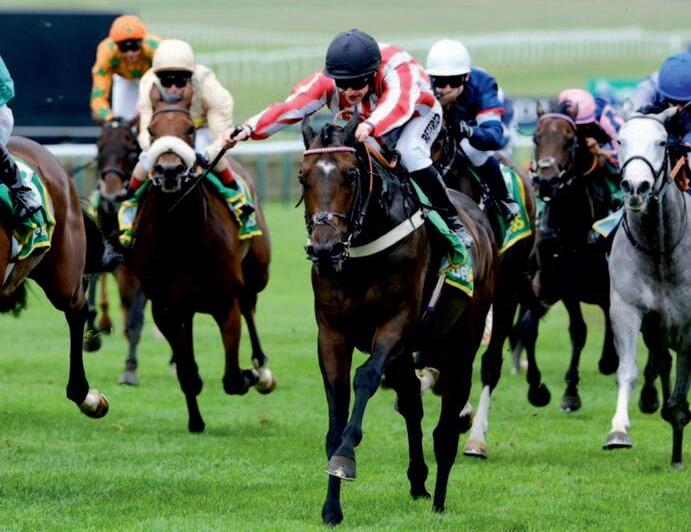
Below: Royal Ascot,
one of the major handicaps of the year. He was then invited to Bahrain for the International Trophy. Astro King has amassed prize money in excess of £200,000 this year so here’s hoping next year continues in the same vein.
During the last eight years I have had a great deal of pleasure from horse racing making many new friends in the process. Despite the amount earned by Astro King, it is still an expensive hobby but I don’t regret my involvement in any way. I currently have an involvement in five horses – Al Rufaa; Astro King; Chosen Hero; Imperial Saint and Quiet Resolve.
Fingers crossed for more success in 2024! n
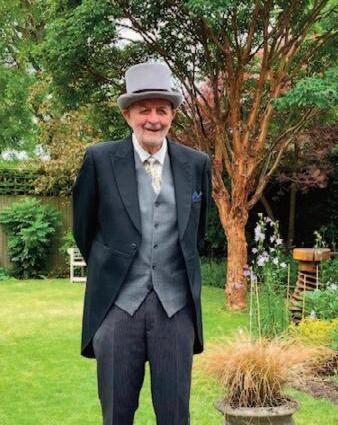


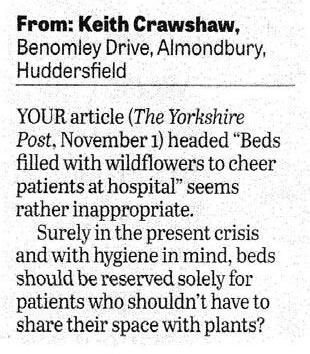
Wrong beds
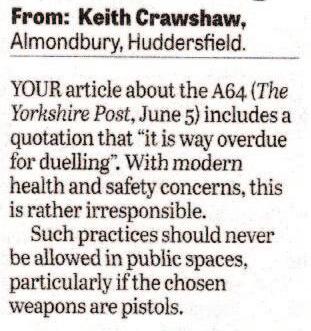
Dual

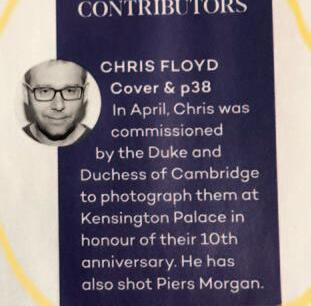
Spotters: James Clayton, Keith Crawshaw, Roger Dowling
Have you spotted anything in print or on social media that has amused you or given you food for thought? If it’s worth sharing, send it to us: spotters@oas.org.uk.
It was 75 years since this motley collection of youngsters traipsed down St Helen’s Gate to start a new adventure.Time for a celebration, they thought.
IT seemed like a good idea at the time. It was not easy getting people together, for a variety of reasons, and time marched on. Finally, our own Allan Dobson, son of the illustrious Almondburian, Gerald, was landed with rallying the troops and getting a bunch of us together. It would not be the first time we had met. In previous years, before Covid, we had one or two very successful luncheons at the Old Bridge Inn at Ripponden, which later made a brief appearance in the TV drama Happy Valley. Not a lot of people know that. Since Covid, however, things went off the radar and it took
some time to pick up the pieces (who said cliches were unfashionable?).
Allan chased up all those who might still be available, with a new venue on offer, namely the Nag’s Head in New Hey Road. Older readers will recall with nostalgia the original pub. On a Saturday night in particular it was not unknown for the drinkers in town to extend their beverage intake by visiting the Nag’s Head. I remember it as a very basic place, a really old, genuine hostelry, where pints were served from the barrel. It has since been transformed into a popular restaurant and bar. There is also a hotel next door, which may be of inter-
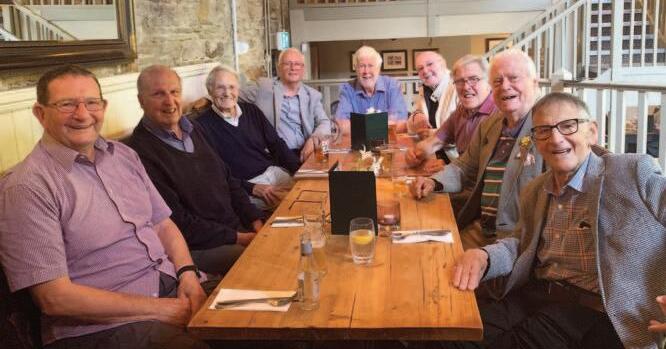
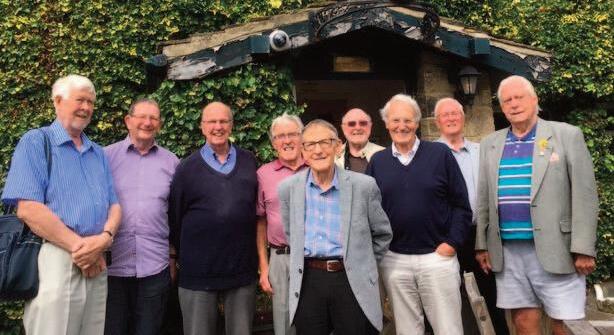
est to others who may wish to visit from afar. After much effort our team of stalwarts were ready for the challenge. Right up until the last few days, numbers were varying but we ended up with nine in our party which was a remarkable effort, all things considered. Four of us travelled some distance and the rest were local lads.
Terry Green braved the M62 lorries on his way from Cheshire. Alan Smith drove from Brough in the East Riding, leaving his wife in safe keeping with other relatives in the Halifax region. Jim Dye was chauffeured by his wife and daughter from his home at the foot of the North York Moors. I bought a day return and travelled up by rail from Norwich, and was very pleased that ASLEF didn’t spoil the party.
Inside the pub, we were well looked after and had our own large table in a quiet area. There was a variety of dishes to choose from and the gammon steak I had was one of the best. The usual lagers were
on tap but I was particularly interested in supporting local brewers, hoping that something from Elland Brewery might be available (is it still in business?)* Undaunted, I sampled the excellent beer from Leeds Brewery, which was very palatable.
Our group started chatting as though they were continuing where they left off from last time. It is not uncommon for people of such vintage to deal with medical matters before any other business: I have heard this described as The Organ Recital. Thereafter, all the usual topics cropped up, regarding former classmates and friends no longer with us. It was a wonderful occasion marked in particular by the attendance of some members who, despite adverse health conditions, made a tremendous effort to be with us.
A final word of thanks to Allan Dobson for organising this memorable occasion.n
*Yes. Elland Brewery, established in 2002, is still a very successful local microbrewery. (Ed)
WEhave noted on previous occasions that poetic contributions to The Almondburian over the years have often been inspired by the events of the day. This certainly seems to be the case with P A Taylor’s Ballad of a Mine, published in the Summer Term issue of 1973.
On 21st March 1973 seven miners lost their lives at Lofthouse Colliery, about 20 miles east of Huddersfield, when a new coalface was being excavated too close to an abandoned flooded 19th-century mineshaft. About 3 million gallons of water trapped the miners who were working some 750 feet below ground, and only a single body was recovered in the attempted rescue operation.
NUM member Arthur Scargill, who accompanied the rescue teams underground, used notebooks of underground workings to argue that the National Coal Board could have prevented the disaster if they had acted on the information available.

A sevensided stone obelisk listing the names of the seven miners was erected nearby.
The deafening crash
Of the lightning flash
Sent the men in the mine
In a hopeless dash.
The sirens blew
The pit shafts boomed, All the men knew what to do; Yet most were doomed.
The men worked on
Risking life and soul, And higher and higher Rose the known death toll.
For twenty one days
We dug in vain
We dug in the mud, We dug in the rain.
And after it all
Twenty two men were found
Who had died in that hell
Underneath the ground.
And l think of it now
How these men must have died
ln the lonely wastes
Of that wretched mine.
The owners of the wealthy mine
Saw the fault to be in pit’s design: And so a flower for a family Became official policy.
A rose for a mother
A prayer for a brother
A wreath for a son. Their mourning’s just begun.
P A Taylor, 3 alpha
A worrying new word has entered the lexicon:‘Tipflation’. It’s defined as the increasing amount of money that people are expected to tip at restaurants and elsewhere following the pandemic. And, be warned, it’s on its way to the UK.
‘TAKE My Tip’ has the distinction of being David Bowie’s first officially released composition (as ‘Davie Jones’), featured on the flip-side of his 1965 single with The Manish Boys. I think it sold around half a dozen copies.
Now, if this seemingly irrelevant tidbit of pop culture trivia hasn’t prompted you to skip ahead to the next article, you’re hereby invited to pour yourself a relaxing beverage and delve into the wonder fully confusing world of tipping.
Not tipping as in doffing your cap, or dumping rubbish in someone else’s back yard, or even advising your mate to wager a pony on Lucky Boy the 2:30 at Kempton, but instead the payment of a guilt- induced gratuity univer sally anticipated by service industry employees.
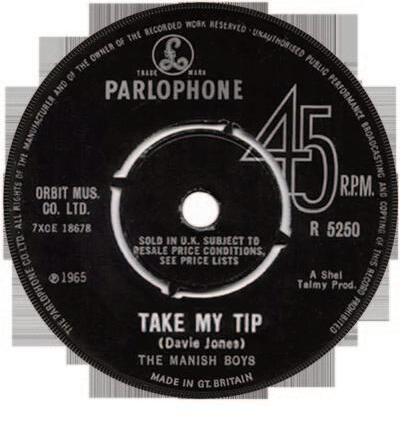
In summers gone by I always looked
forward to climbing aboard a Hansons or Baddeley Brothers ‘luxury’ charabanc with Mum and Dad to take a moderatelymagical mystery tour through the Yorkshire countryside; these Sunday afternoon jaunts were my introduction to the custom of tipping. Towards the end of the journey a flat cap would be passed down the aisle, encouraging passengers to reward the driver for his scintillating running commentary and for including at least one country pub on our circuitous route. Thus medicinally refreshed, our chauffeur’s remaining task was to roll up t’shirt sleeves and weave back to Huddersfeld along the winding B-roads without crashing into a dry stone wall.
Here in America tipping is entrenched in the culture. It’s become second nature to tip concierges, restaurant staff, delivery workers and their equally industrious brethren for a
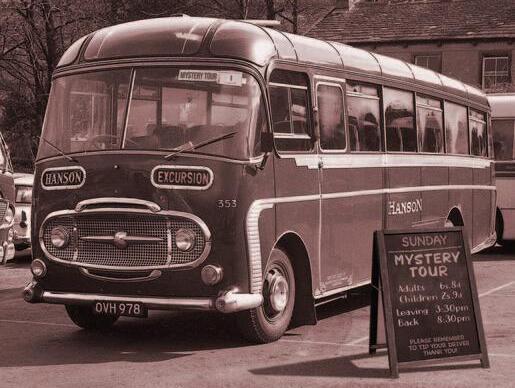
job well done. Curiously, we also feel obliged to leave a tip even when the service is mediocre.
Why do we tip when there’s no legal obligation to do so, and should we tip merely because it’s expected of us? The natural tendency to care what others think about us and to avoid social embarrassment can be a strong incentive. Perhaps some patrons genuinely empathise with a stranger’s financial situation, even considering it a hands-on form of charitable giving. Does discretionary tipping actually encourage better service and, incidentally, how much should we tip?
A few years ago while visiting Cardiff my wife and I enjoyed a particularly good vegan meal at an Indian restaurant.When, by force of habit, we left a tip the staff looked at us as if we were bonkers. Similarly, Americans visiting the United Kingdom quickly learn that, unlike at home, they’re not expected to tip in a pub. It can be confusing.
The whole rigmarole likely came about way back in the Middle Ages when
The Huddersfield firm Hanson was for many years synonymous with holiday outings. Dating back to the charabancs of the 1920s, the company became part of Abbeyways in 1988.
a token of appreciation might be gifted to a lowly serf or servant by his master or other person of means. (Speaking of masters, I wonder if our King James’s preceptors would have accepted gratuities for presenting a particularly fascinating lesson… or to ensure shorter detentions?)
It’s been suggested that ‘tip’ stands for ‘To Insure Promptness’, but that’s codswallop because it’s an old word predating our modern predilection for creating acronyms. In a linguistic shift from its origin as a fourteenth century Scandinavian term ‘to dump' or ‘overturn’, in 1600s’ Britain it seems the word was adopted as criminal slang for sharing inside information.
Its association with rewarding service was first documented in Irish playwright
George Farquhar’s 1707 stage comedy
The Beaux’ Stratagem: “Then I, Sir, tips me the Verger with half a Crown”. See, this is all Farquhar’s fault.
While tipping is now pervasive in the USA it was almost non-existent before the Civil War era. Well-to-do Americans visiting Europe brought the practice back across the Atlantic in the mid-1800s, eager to flaunt their newly acquired high-
falutin’ Continental customs. It was initially reviled by critics as ‘a gross and offensive caricature of mercy,’ encouraging a culture of servility in a nation supposedly founded on democratic principles. (At one point in the early 1900s the issue became so contentious that several states temporarily outlawed it.)
Unscrupulous American employers, always looking for an opportunity to pay meagre wages, actively encouraged customers to tip workers. One such scrooge was entrepreneur George Pullman, who in 1863 introduced the eponymous firstclass dining carriage to train travel and hired thousands of former AfricanAmerican slaves as servers and porters to wait on wealthy white passengers. As the railroads expanded across the nation so did tipping and by the turn of the cen tury it had become com monplace. In today’s America many service providers scrape by on something euphemisti cally termed ‘minimum wage’.
Socially minded citi zens, anti-poverty advo cacy groups, and unions spent decades fighting big business, the free market economy, state legislatures, and the US Supreme Court until the government was shamed into establishing an initial hourly minimum ($0.25c) in 1938. The current rate of $7.25 an hour was set back in 2009 but, confusingly, individual states and munici-
palities are allowed to determine their own. In my relatively progressive state of New Jersey it’s been raised to $15.13*.
Then there’s the federal ‘tipped’ minimum hourly wage set by the Fair Labor Standards Act – a mere $2.13 – governing hospitality employees who rely on gratuities to supplement their income. Where a person’s combined minimum wage plus earned tips doesn’t match federal guidelines, an employer is required to make up the difference.
The term ‘living wage’ is a theoretical minimum income deemed necessary to meet basic needs (food, housing, heat, transportation, health care, child care) and remain above the poverty line. It’s hardly adequate. Consequently many work multiple jobs and rely on food stamps, sometimes living with parents or relatives, or unfortunately falling into homelessness. Being ‘house-deprived’ or ‘unhoused’ (in current parlance) is a huge social problem in the USA that shows no sign of improv-

All tips, whether received in cash or by electronic charge, are deemed taxable income by the dreaded Internal Revenue Service (IRS) and are expected to be reported to one’s employer to determine how much payroll tax is to be
*£11.91 at current exchange rates.The minimum wage in the UK today is £10.92.

withheld. (It’s esti mated that up to 40% of tips go unre ported.) When a business has multi ple employees the fair distribution of pooled cash gratuities can depend heavily on the boss’s integrity – a factor which shouldn’t be taken for granted. Wage theft is an inequity oft endured by undocumented immigrants and workers of colour, exacerbated by the persistent burdens of racial and sex discrimination. In part to improve reporting accuracy by incorporating data from the latest payment technologies, in 2023 the IRS proposed adding a new Service Industry Tip Compliance Program to its already Byzantine structure, but for now the plan remains in limbo.
During the Covid-19 lockdown storeto-door services exploded in popularity. For a while everyone was indebted to the package and grocery workers who risked their health to deliver essential goods and they were thanked accordingly. (Was Bullingdon Boris equally generous when pizzas were delivered to Downing Street for the parties he didn’t attend?) Since then, however, inflation and the alarming rise of food prices have caused folks to rethink their charitable habits.
A new survey by Pew Research Centre (a non-partisan American thinktank based in Washington, DC) found that two thirds of customers are experiencing ‘tip fa-
tigue’. Ted Rossman, senior industry analyst for bankrate.com (a trusted US source of financial data) says “I think inflation is leading people to be especially stingy about how much they're spending and I think that this proliferation of tip prompts is making people question the very nature of tipping.”
He’s referring of course to the dreaded ‘suggested tip’ touch screen. The old counter-top tip jar is receding into analogue history. With the advent of electronic point-of-purchase checkout terminals the proctological fingers of modern technology are insidiously poking even deeper into our daily lives. (By the way, good luck navigating these gadgets if you’re sightimpaired.) So widespread has this trend become that these devices are now popping up at fast food, take-out, and drive- through businesses which previously didn’t merit patrons’ largesse. With tip suggestions frequently set far above the standard 15%, pre-paying customers can easily feel ambushed into selecting a higher amount, especially when standing faceto-face with the very counter staff about to prepare their food order. Plus, there’s also the associative guilt of hitting the screen’s glaringly obvious ‘no tip’ button. Even so, I won’t be caught tipping a bank teller anytime soon. So, who and how much should foreign visitors to the States tip? In the
BARTENDER: $1 for a beer, $2 for a cocktail.
TAXI/UBER/LYFT DRIVER: 15 % or more to avoid being dumped in the middle of an unsavoury neighbourhood at 2 a.m.
VALET PARKING: even if the service is complimentary consider at least a few dollars for not having your car keyed.
HOTEL HOUSEKEEPING: leave about $2 or $3 a day, because as shifts change the room cleaner could be different each day.
CLOAKROOM ATTENDANT: $1-2 per coat or bag
BELLHOP: $2-3 per suitcase, or so I’ve read.
PIZZA/GROCERY DELIVERY: 15% of the bill.
HAIR OR NAIL SALON: 15% and up, although the shampoo assistant or colourist may expect a separate fee, much like the small army of servile lackeys at a Fine Dining Establishment…
FINE DINING ESTABLISHMENT: generally 20 % although a really upscale restaurant may expect a separate tip for the maitre d’, the waiter, the sommelier, the table crumber (the dogsbody who scrapes the detritus from your tablecloth), the boot-licker, etc.
“A tip, sir? The opportunity to watch you stuff your face these past two hours has been its own reward, but since you insist…”
panel above I offer my recommendations to any reader planning to visit us in the coming year.
In many countries tipping is not de rigeur , although one may find a small service charge added to the bill. In Japan and South Korea it can be considered rude, even insulting. The logical thinking is, if a hospitality worker already receives decent money then providing good service is an end in itself and shouldn’t warrant extra payment. Marxist intellectual Leon Trotsky strongly adhered to this premise when, for a brief time, he lived in New York City’s Bronx. Dignity for the working man, and all that.
At least, that was the man-of-thepeople’s reason for not tipping. In this,
Trotsky was in step with US millionaire magnates like Andrew Carnegie and J D Rockefeller.
Modern day celebrities who’ve earned a reputation for being parsimonious include Madonna, Tiger Woods, Britney Spears, Sean Penn, Nicole Kidman, and Jennifer Lopez. Salt of the earth Yorkshire folk might be forgiven for expecting Britain’s rich and famous – prominent businessmen, film and TV stars, rock musicians and sportspersons, Whitehall politicians, OAS magazine editors – to be extravagant tippers. While that might hold true for some, I’d like to think the late, great David Bowie was a generous sort, always ready to share a pocketful of change. n
Tandrew.haigh@oas.org.uk
HE 2023-24 badminton season got underway on 14th September but, unfortunately, has been quite quiet. Most weeks we had only four or five people playing, although there were a couple of weeks where we were delighted to welcome some guests from Crossley Heath School in Halifax while their courts were out of use due to mock exams.This did boost our numbers and made for some good games. Numbers were also a bit better on the last Thursday before Christmas, when we held our traditional Christmas party after playing.
Due to the late end to the school holidays and the sports hall being full of desks for the first two weeks of term whilst our own mock exams were held, it was Thursday, 25th January before badminton resumed after Christmas.The spring term will also be shorter, due to Easter being early this year.
However, we could do with a few more regular players and welcome everyone.We

play in the School sports hall each Thursday evening during term-time, from 7:30 pm. until 9:00 pm. until Thursday, 14th March. The fee, to cover the hire of the sports hall, shuttlecocks and showers, has been £6.00 per person per evening although, in view of the current low numbers, that may have to increase to £7.00, unless numbers increase again. Afterwards, we adjourn to Almondbury Conservative Club for refreshments.
Those who have ventured on court with us so far this season are: Ian Daffern, Robin Merchant, David Parry, Andrew Haigh, Eleanor Haigh, Craig Watts, Richard Kane, Joe Schewtschuck and four guests from Crossley Heath School.Why not come and join us?
Once the badminton season finishes at Easter, we play tennis at Longley Community Sports Club on Thursday evenings from 7 pm onwards.There is a guest fee of £3 for non-members. n
ROBIN MERCHANT robin.merchant@oas.org.uk
THE Gothard Cup 2024 competition will take place at its traditional venue of Woodsome Hall, on Sunday 21st July with the 1st tee reserved from 2.30pm. As always the golf will be followed by a meal and the presentation of prizes.
So who can stop Mark Slater making it three in a row? To prevent Mark ‘doing a Manchester City’, I will be ensuring that his

handicap is well scrutinized!
Don’t worry if you don’t play the game, but have always thought about playing – I have arranged a taster session on the day with the Woodsome Hall golf professional !
So if would like meet up with old school mates over a drink or two after a game of golf, or the taster session, please do come along and join us. n
Pioneering computer trader with China who never lost his sense of fun Tony Hirst passed away peacefully on 14th January 2024 in a Harrogate nursing home after a long battle with Hodgkin’s lymphoma.
Although we were not the closest of pals at school, Tony and I both transitioned to Portsmouth College of Technology and we shared a bedsit for some time. It was at this time he earned the nickname Hairy as he had entered a hippy stage in his life.
After graduation, Tony went into Management Services and Computing, working for Systime Computers in Leeds. He went on a trade mission to China before it had ‘opened up’, baffling locals who had never seen westerners before. Unfortunately, he fell ill eating real Chinese food on a freighter in the South China Sea and was cured with mysterious Chinese medicines! He next went into consultancy, including artificial intelligence work, ending up as special advisor to central government. After retirement, he became a warden for the National Trust and led tours of Fountains Abbey and ghost walks in Ripon where he lived.
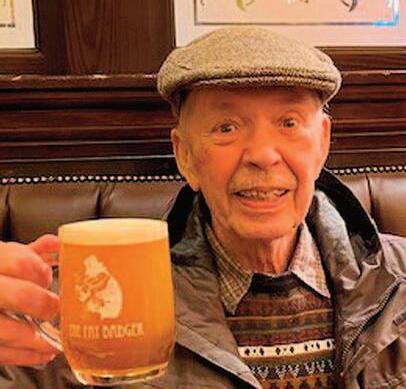
Much later on we met up and reminisced about our school days, wondering about our former school chums. We decided to join the OAS and went for several years to the annual dinner reuniting with many of our year before realising that this was not the event for us. Instead, Tony took up the job of organizing annual reunions of our year at the Head of Steam at Huddersfield Station, which still continue to this day.
He had two sons, Eddie and Carl, around the same time as I had mine in the seventies and we used to balance our paternal duties with spins around local country pubs and occasional car rallies.
Despite the seriousness of his career, there is no way that Tony could be described as a serious person. At school he was a bit of a scallywag and his behaviour sometimes bordered between the comedic and the outrageous! He also later a man who wore many hats - both literally and figuratively! - as well as some-

times dressed and acted rather eccentrically.
Above all, however, he had a huge sense of humour. We miss him a lot.
.

John Anthony Hirst, born 4th September 1946, died 14th January 2024 aged 77.
Christopher Fry/Eddie Hirst
Ian Stuart Clelland (KJGS 1947-1955)
Almondburian who left the UK to set up a successful mining company in the USA
We are sorry to report the recent death of Ian Clelland . Born in Deighton, Ian came to Almondbury Grammar School in September 1936 and went on to study at Leeds University.
We understand that Ian subsequently emigrated to the USA where he set up his own company Clelland Mining in Arizona.
Ian’s final home was in Tucson, Arizona. He leaves a wife Christine and daughter Rosanne.
Ian was a cousin of the late Keith Brier (1947-1953).
Ian Stuart Clelland, born 11th September 1936, died 2023 aged 88.
Our thanks to James Clayton
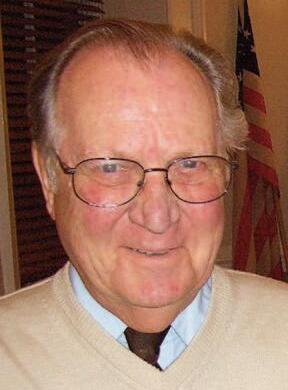
We also sadly have to report the deaths of two former players of the former Old Almondburians' Football Club:
Eric Abbott (1958-1963), born 23rd September 1947, died 25th July 2023 aged 75
Jonathan Haydock (1968-1976), born 27th October 1957, died 22nd November 2023 aged 66.
Chairman
WALTER RALEIGH
15 Thorpe Lane, Almondbury HD5 8TA
Tel: 01484 308452
Email: walter.raleigh@oas.org.uk
Secretary
ANDREW HAIGH
2 Arkenley Lane, Almondbury HD4 6SQ
Tel: 01484 432105
Email: andrew.haigh@oas.org.uk
Treasurer
KEITH CRAWSHAW
5 Benomley Drive, Almondbury HD5 8LX
Tel: 01484 533658
Email: keith.crawshaw@oas.org.uk
Media Editor
ROGER DOWLING
Orchard House, Oughtrington Lane, Lymm, Cheshire WA13 0RD
Tel: 01925 756390/07815 601447
Email: almondburian@oas.org.uk
Assistant Media Editor
RICHARD TEALE
The Sycamores, 239 Huddersfield Road, Thongsbridge, Holmfirth HD9 3TT
Tel: 07810 313315.
Email: richard.teale@oas.org.uk
KJS Representative
ABBIGAIL TERRY
King James’s School, St Helen’s Gate, Almondbury HD4 6SG
Tel: 01484 412990
Email: abbi.terry@oas.org.uk

Website:
www.oas.org.uk
The Almondburian is distributed to OAS members free of charge. Price to non-members: £3.00